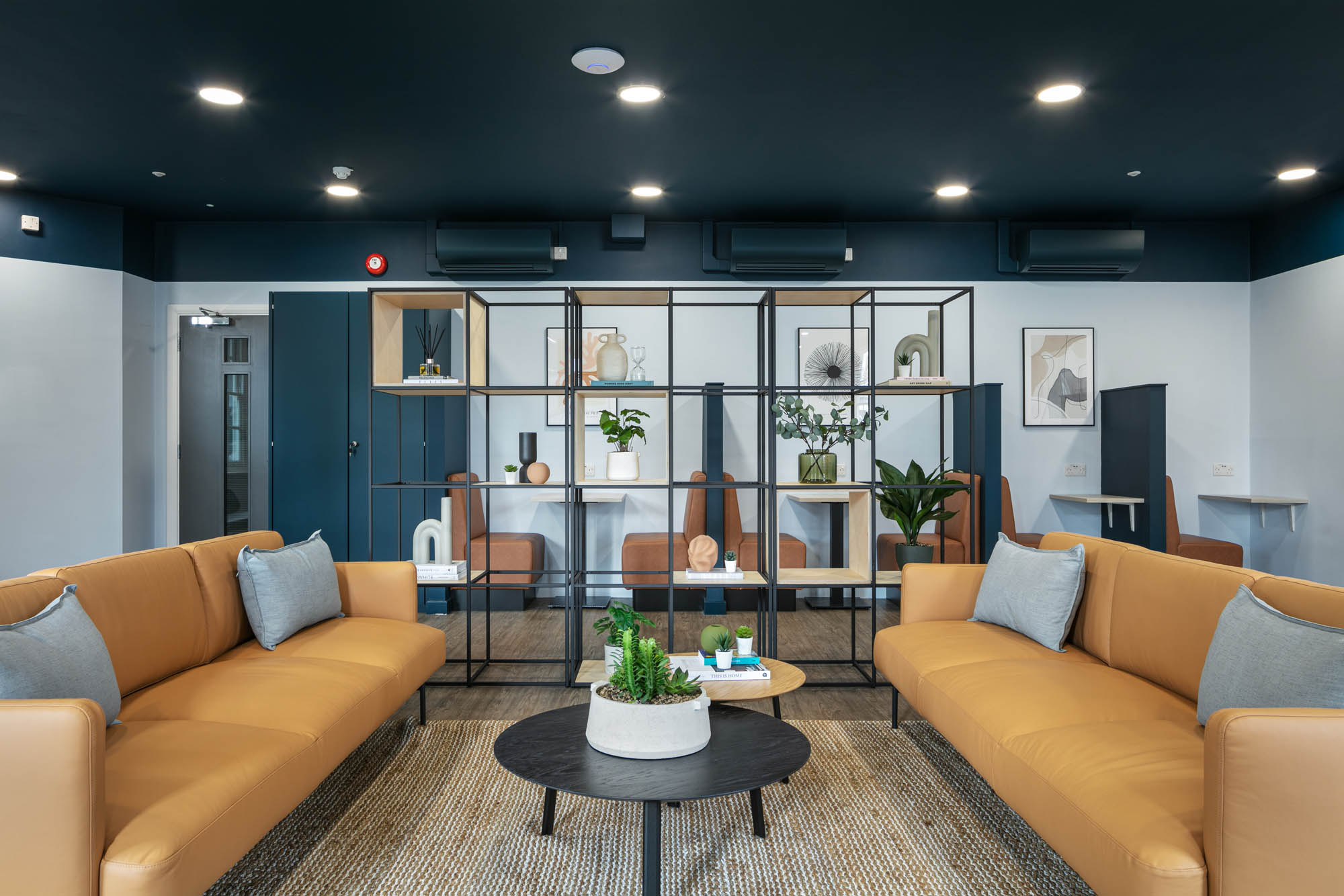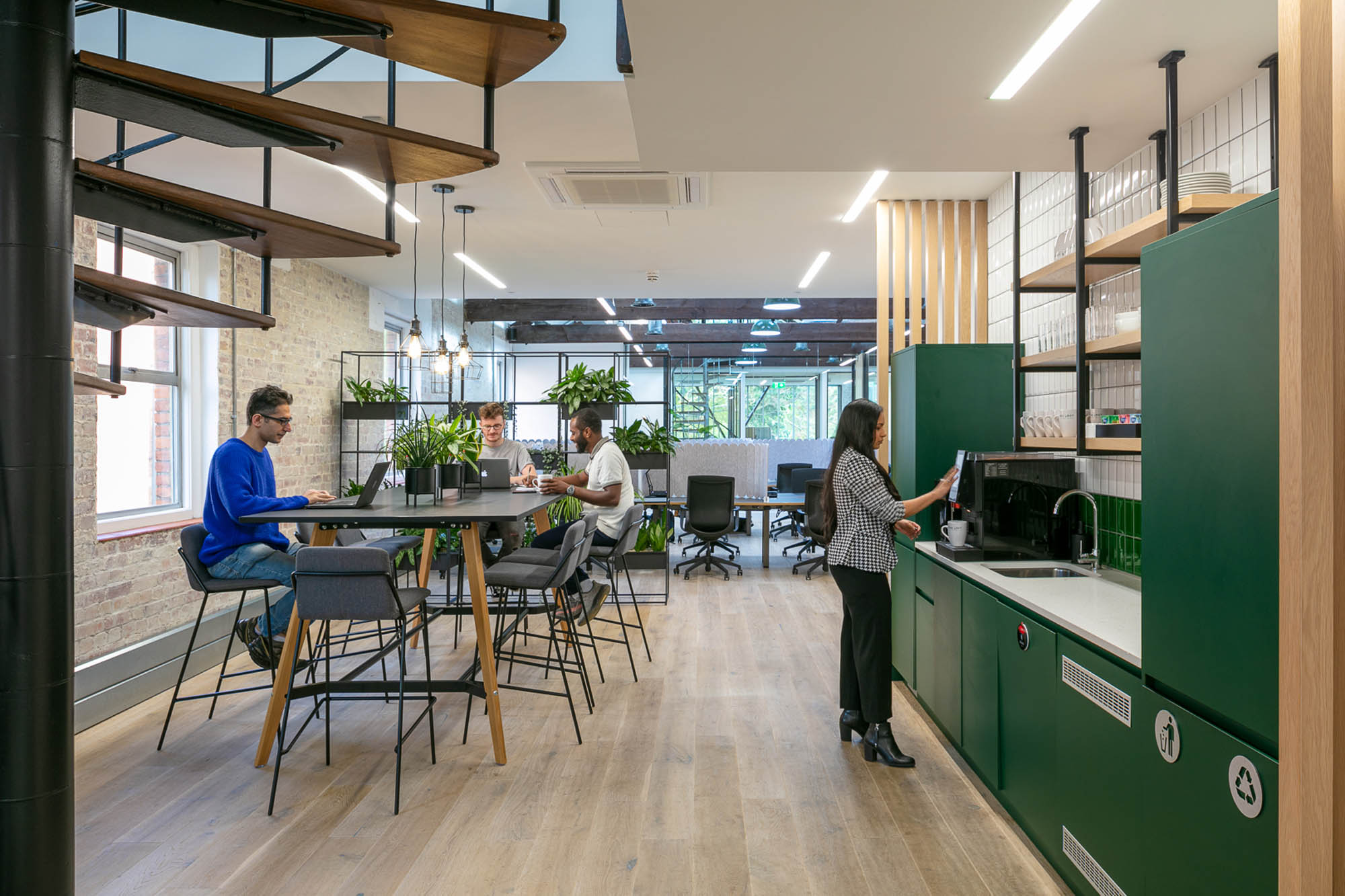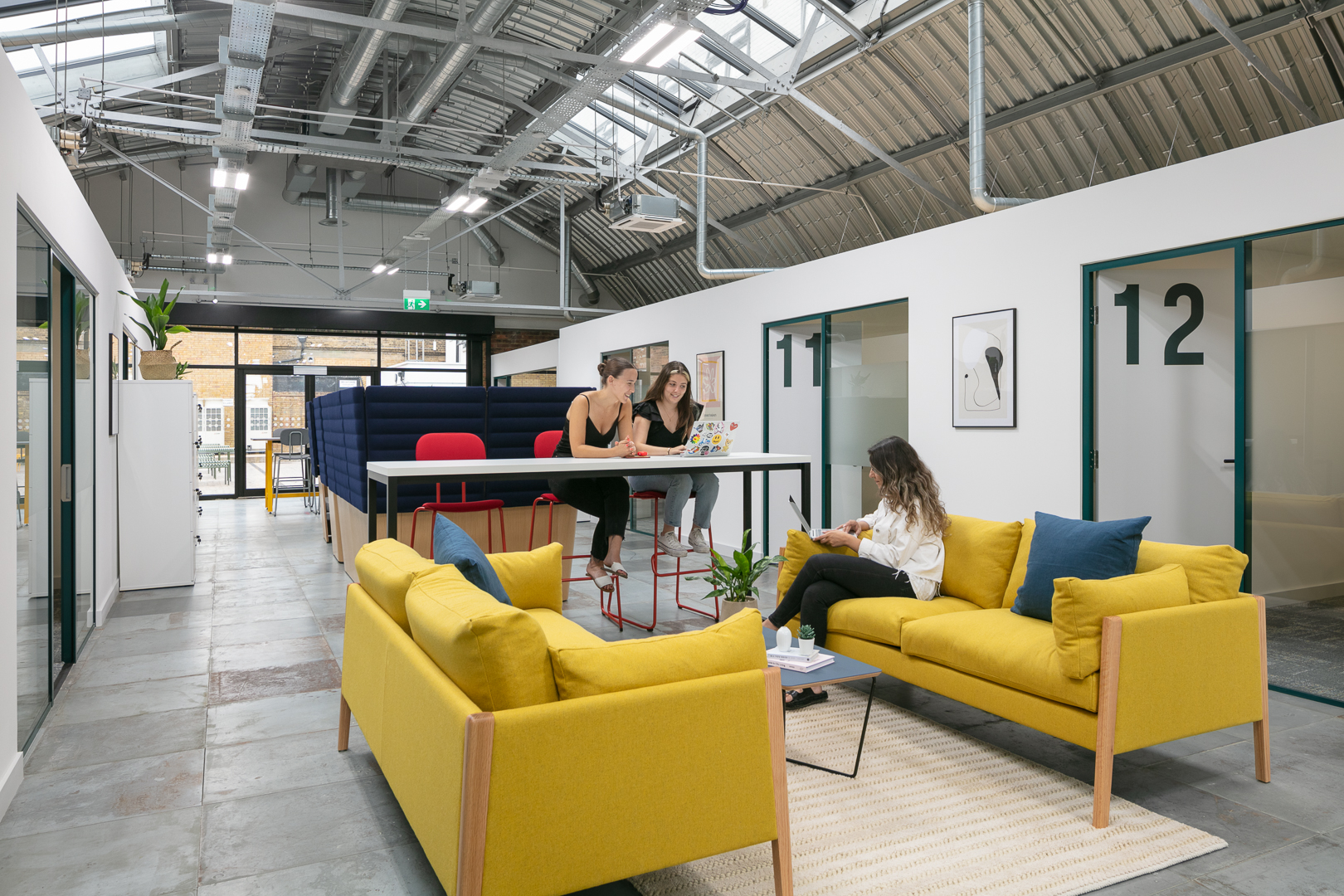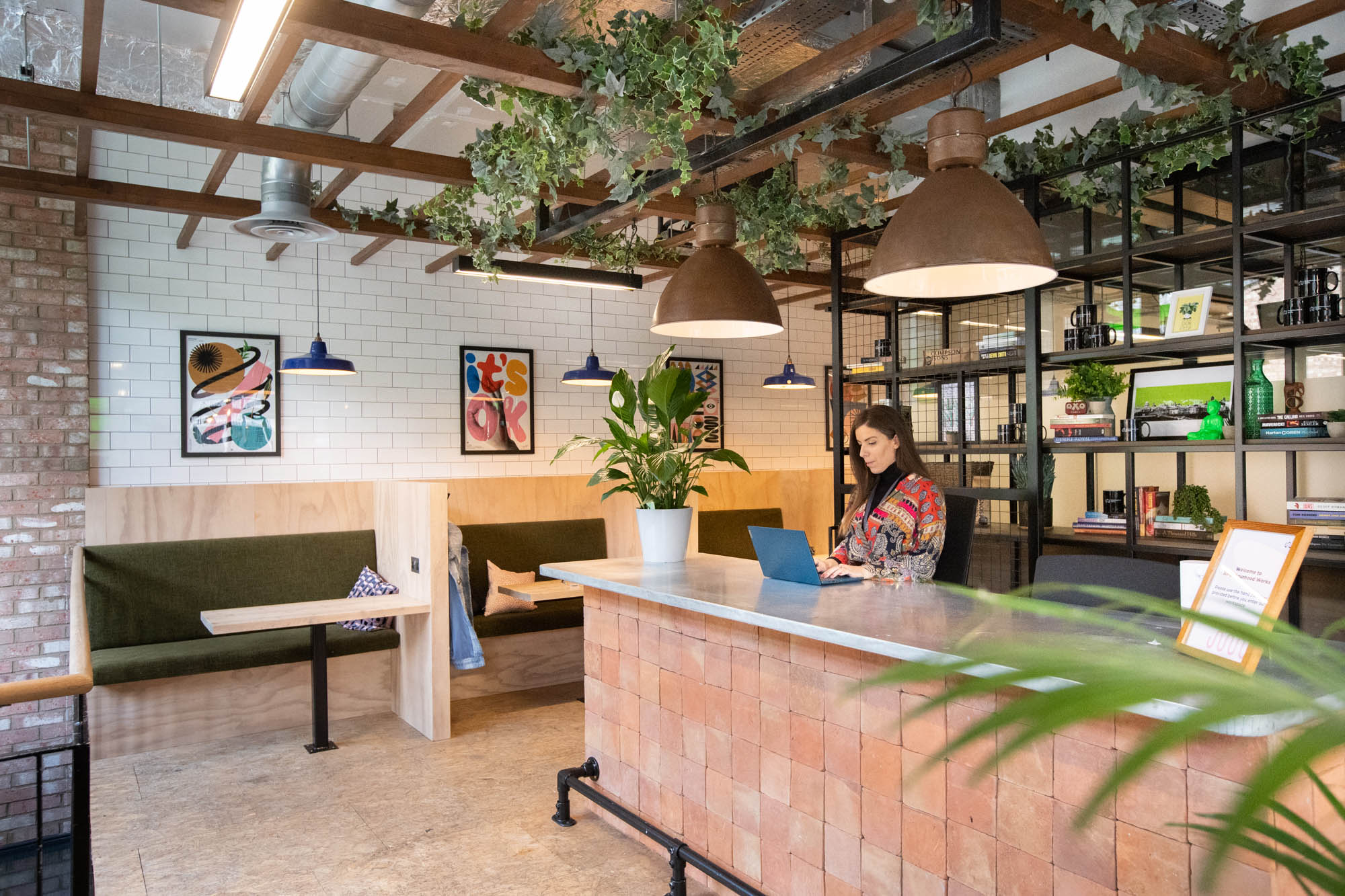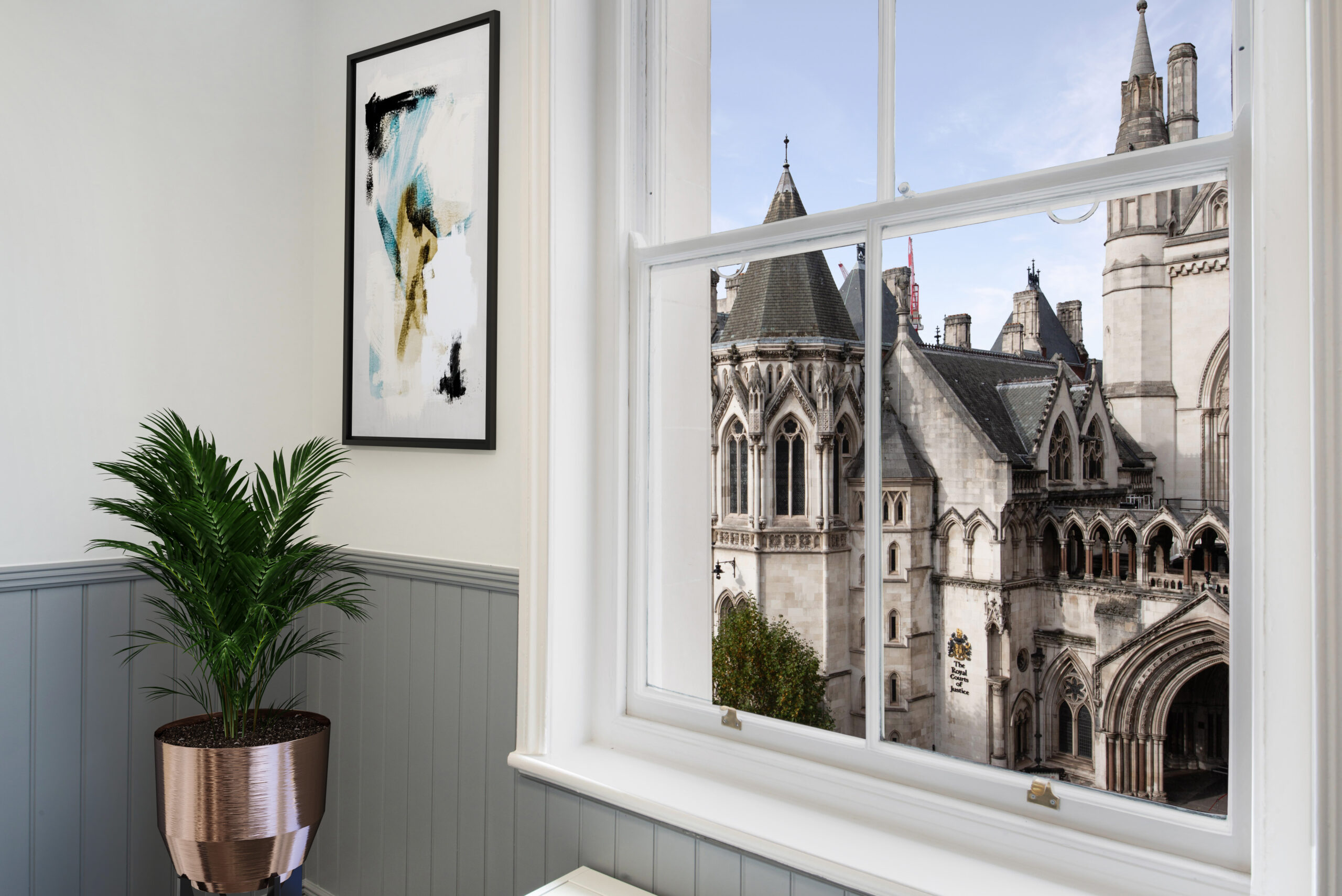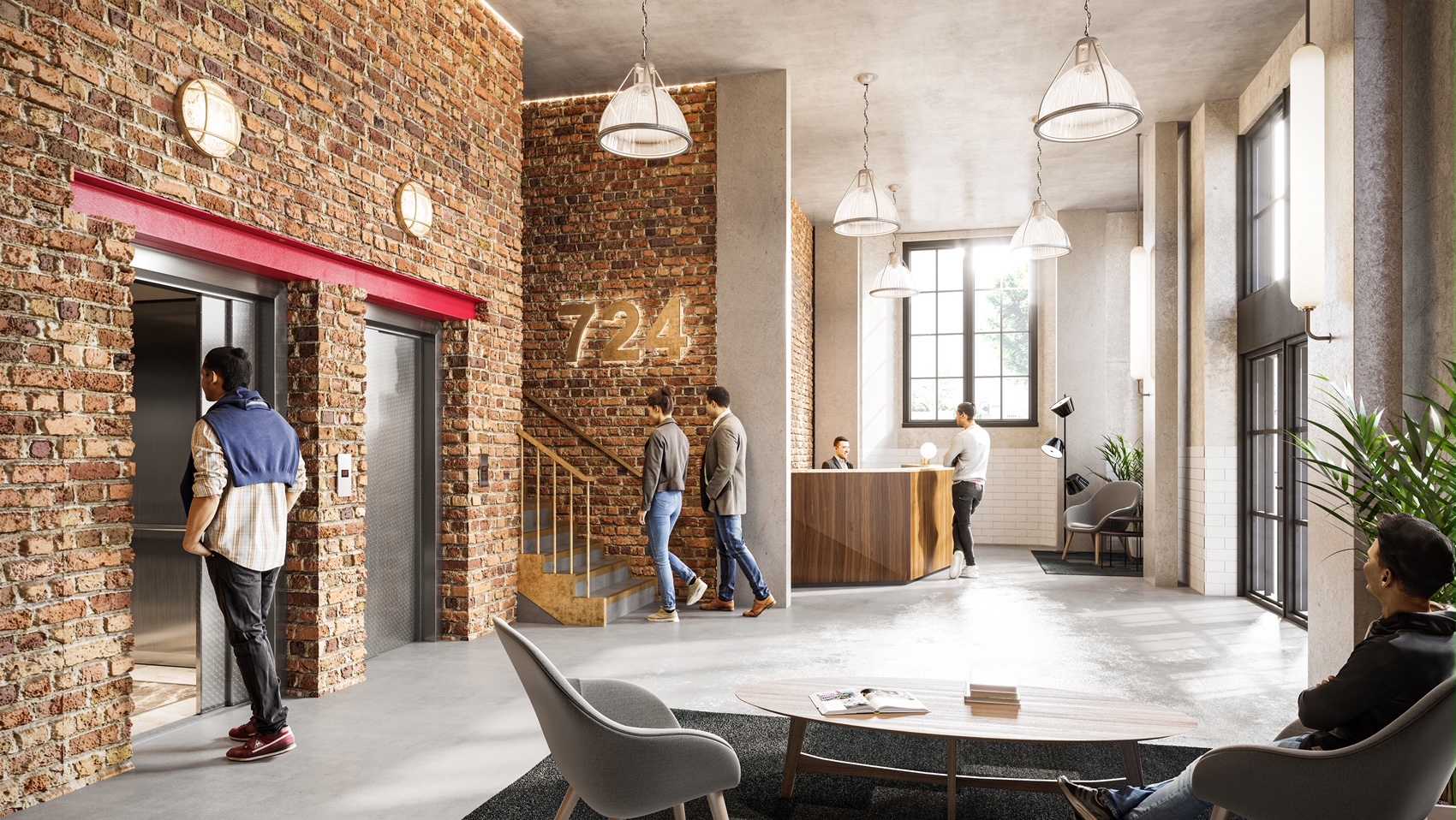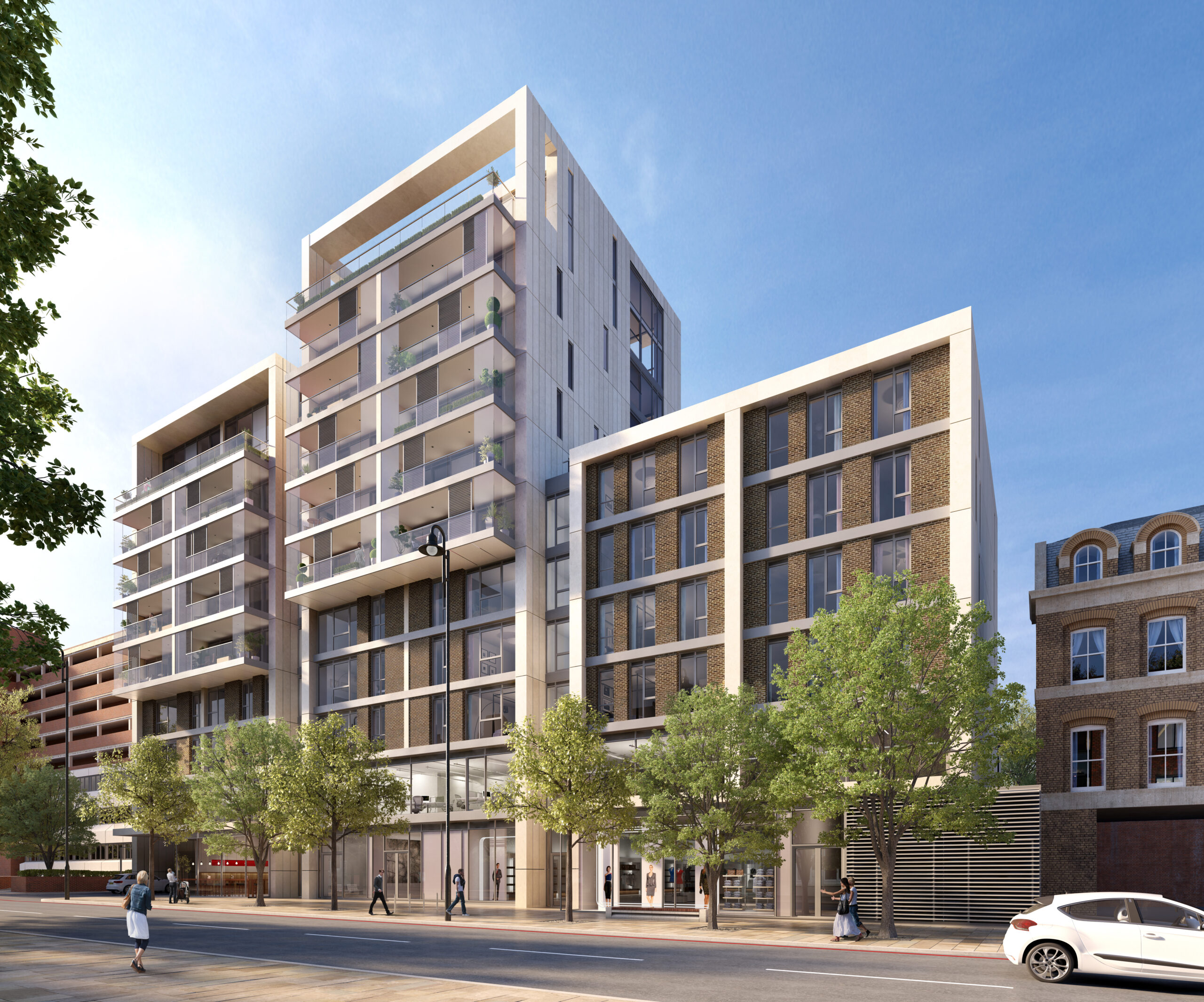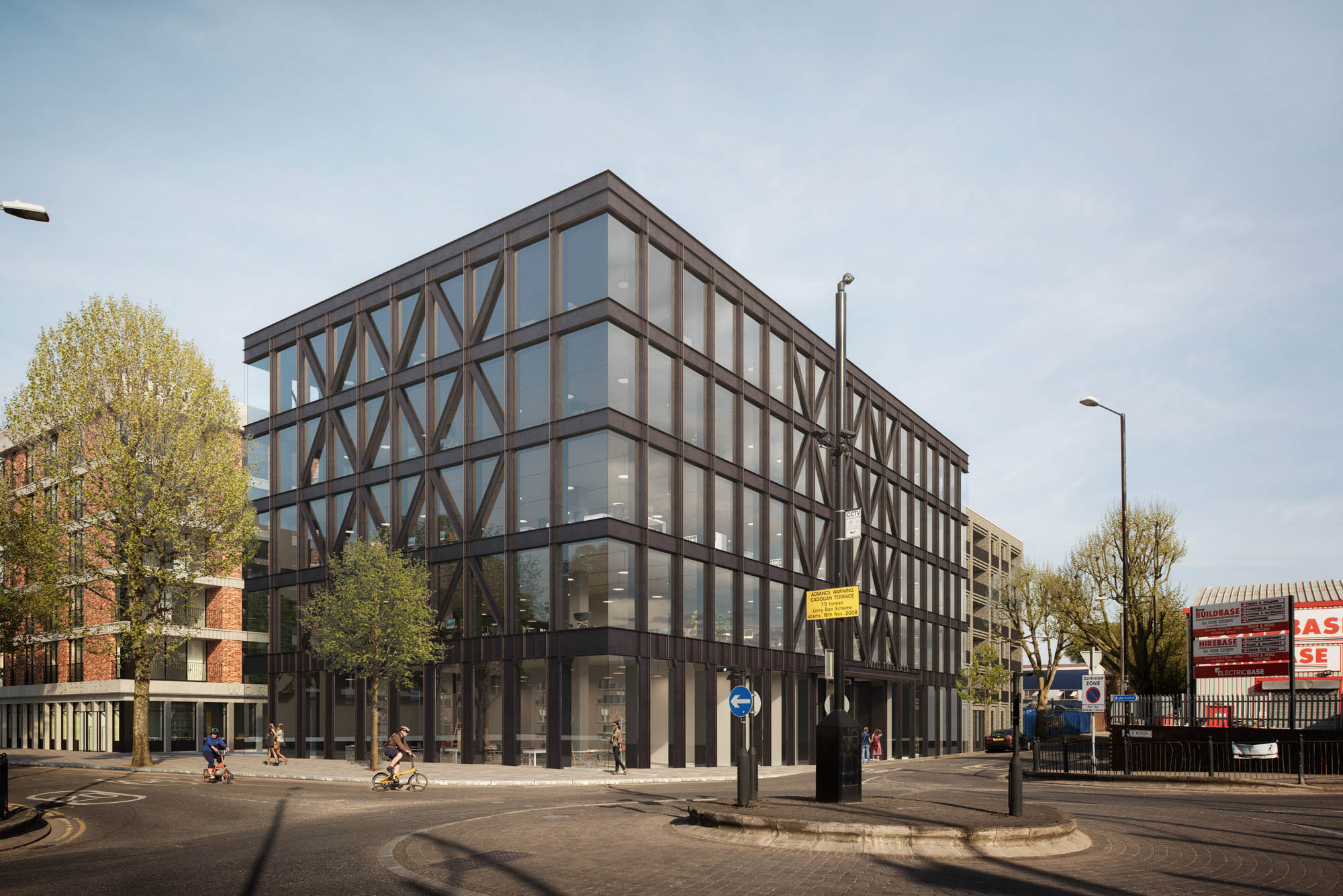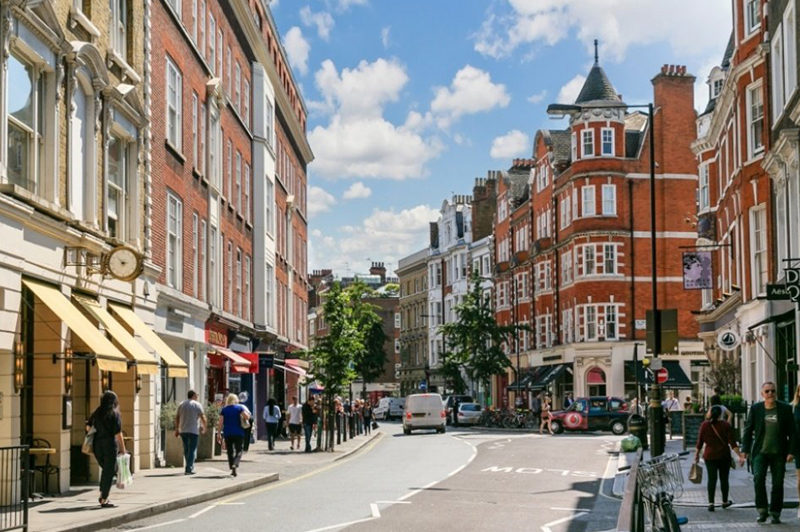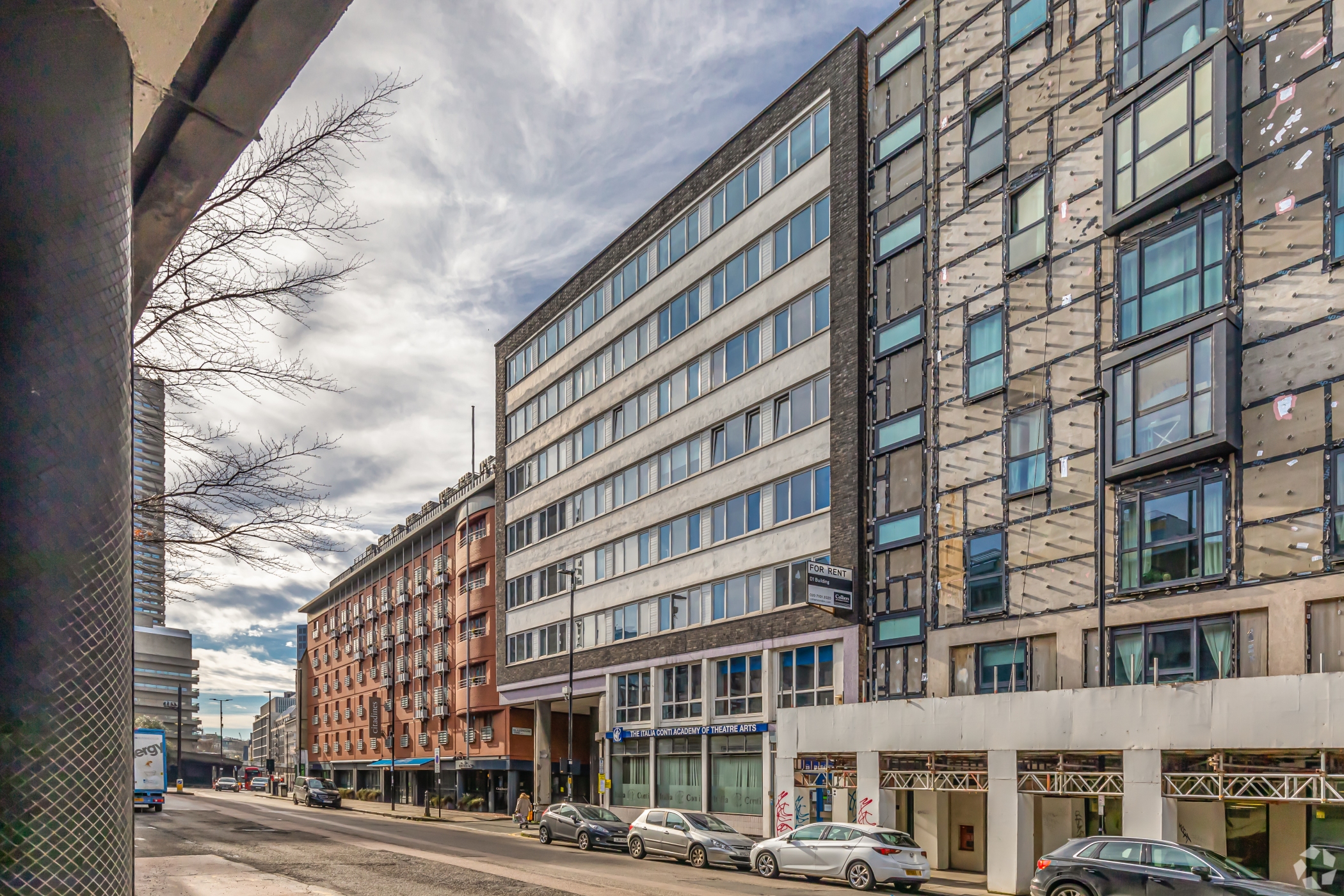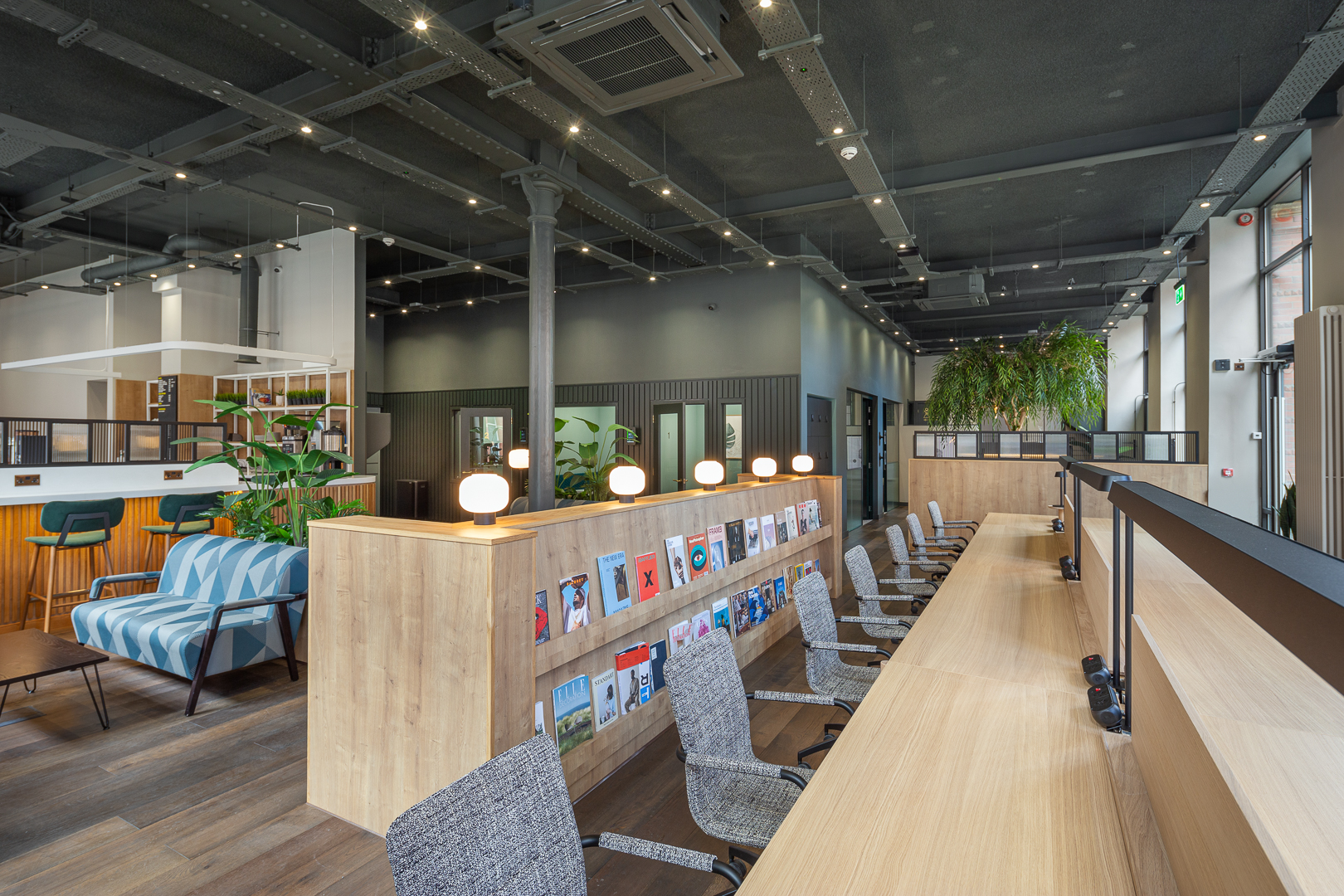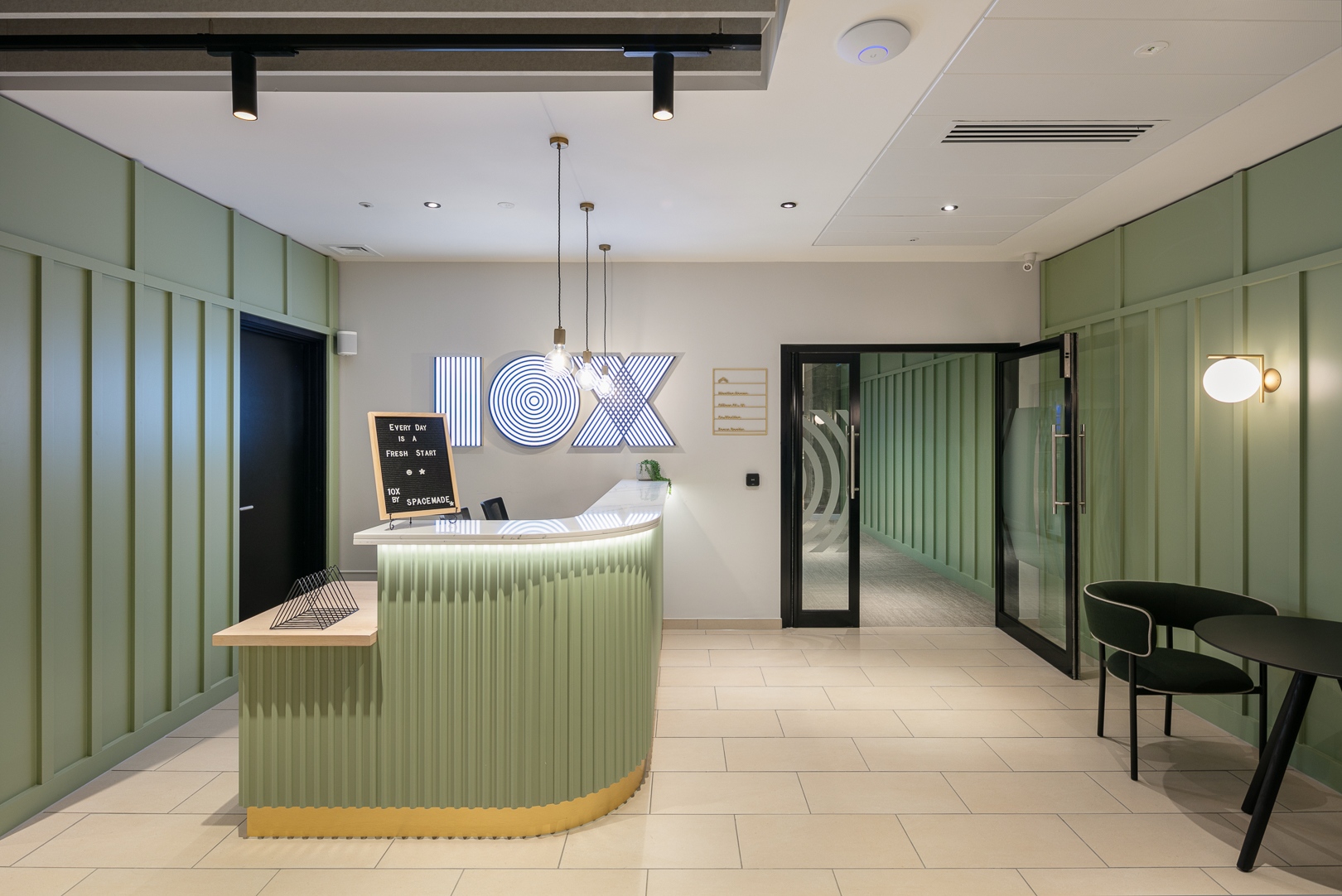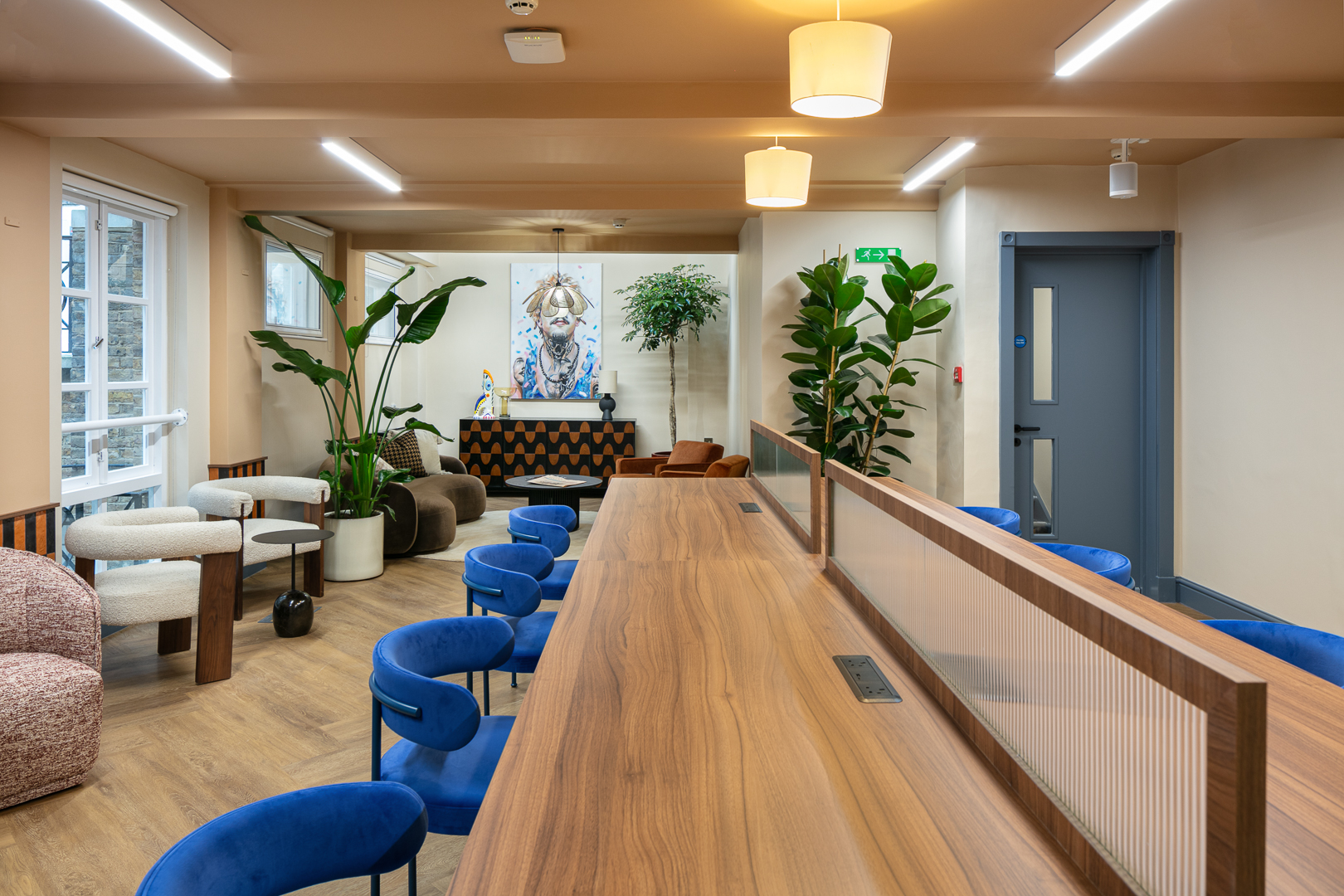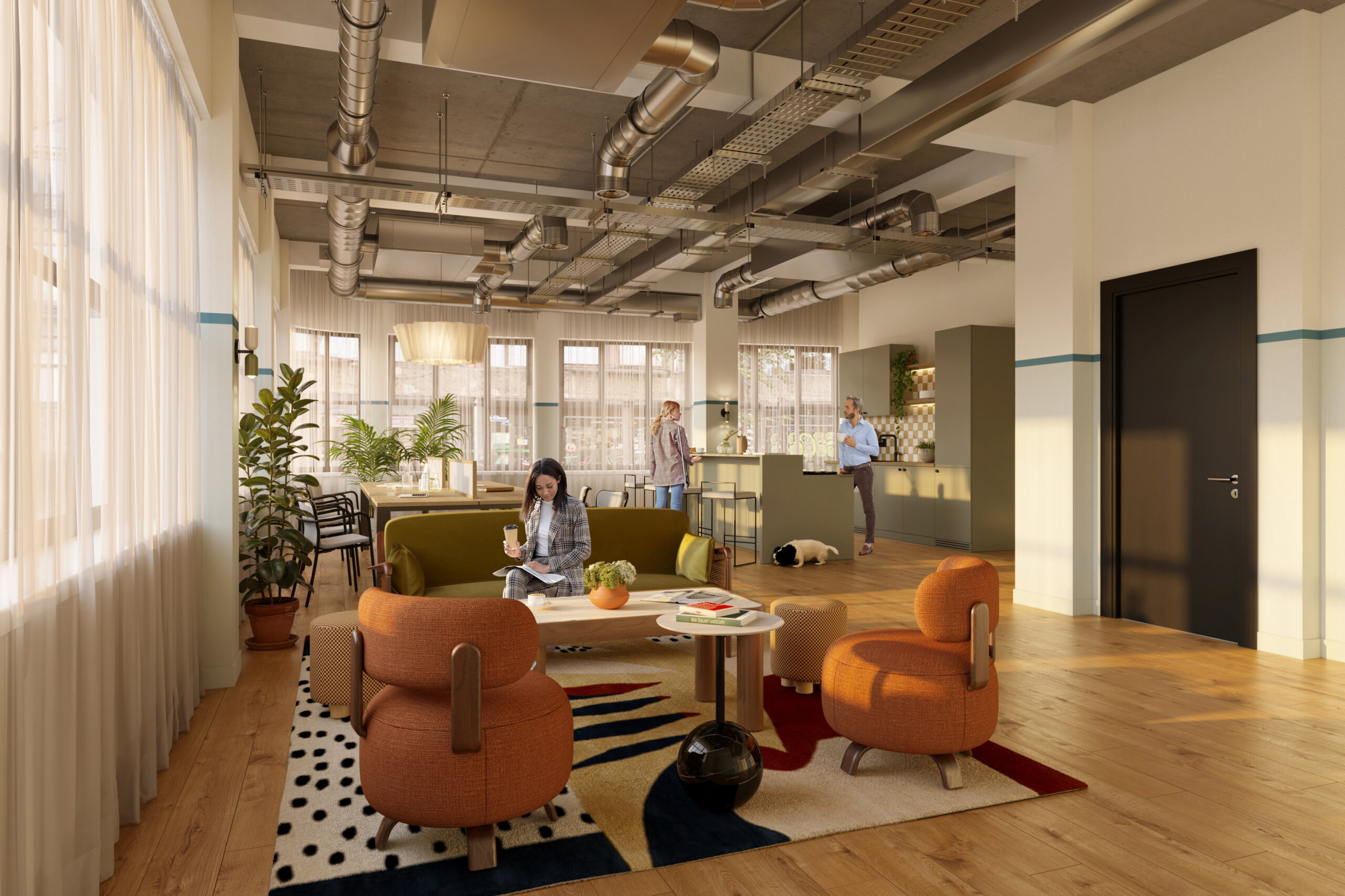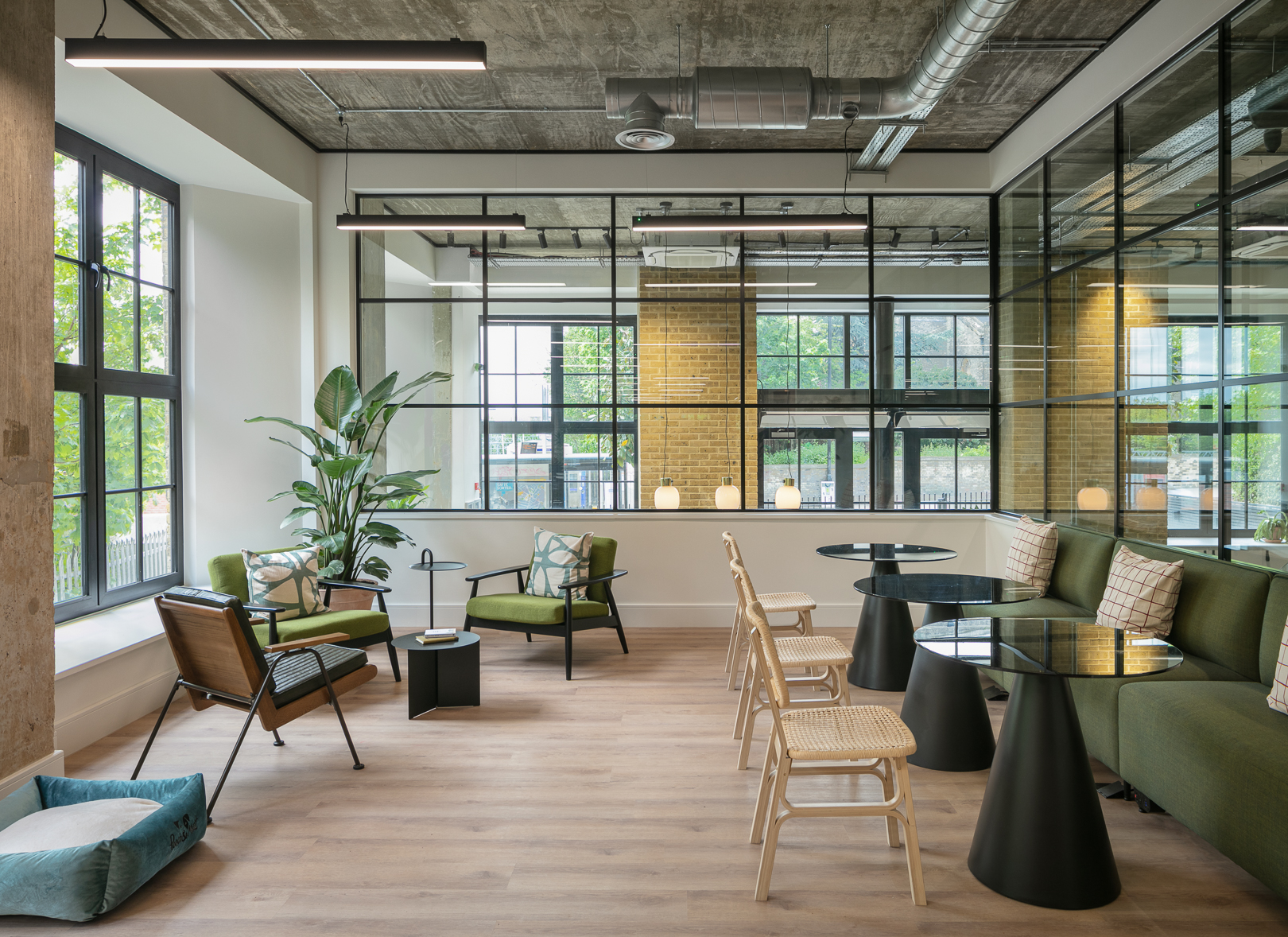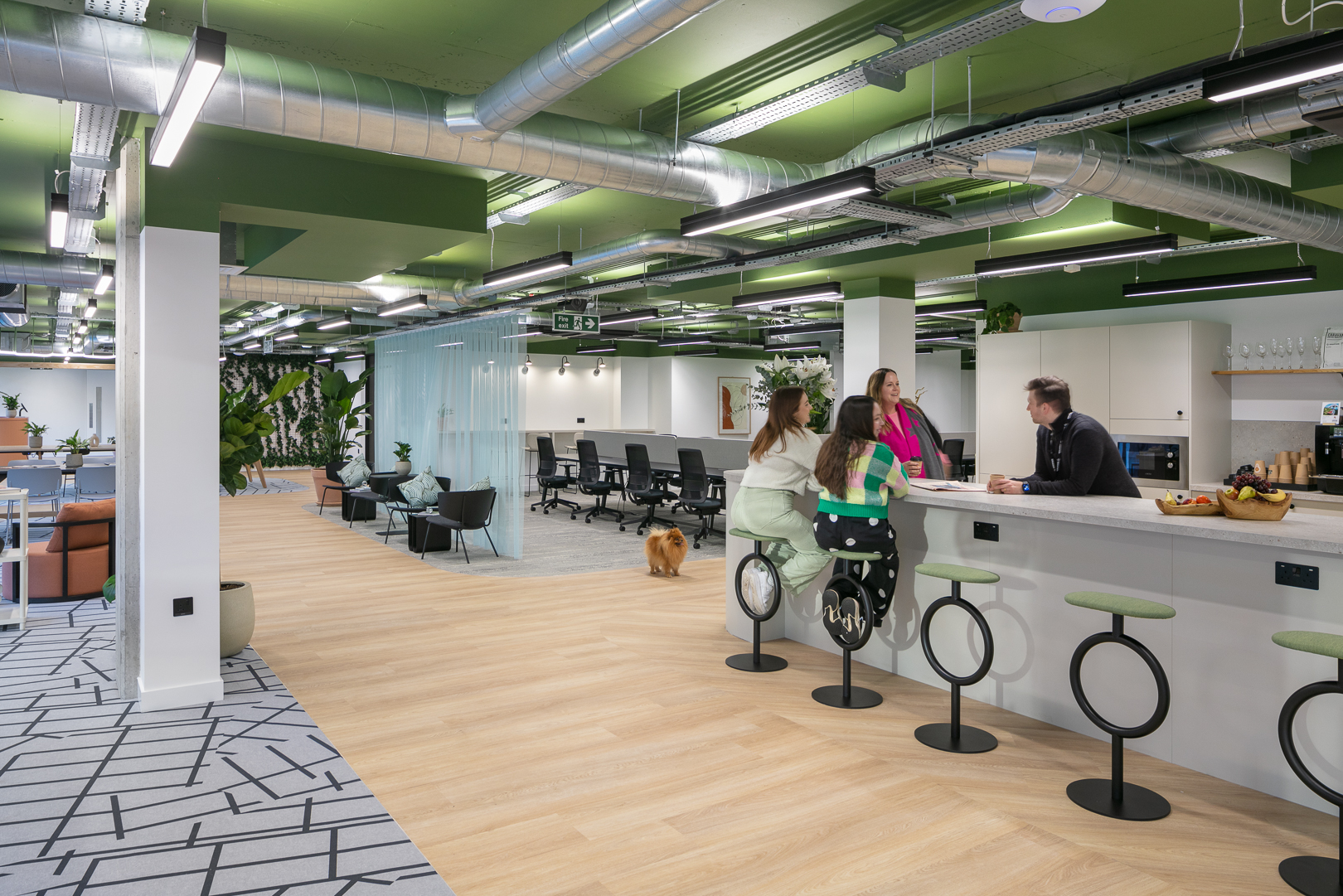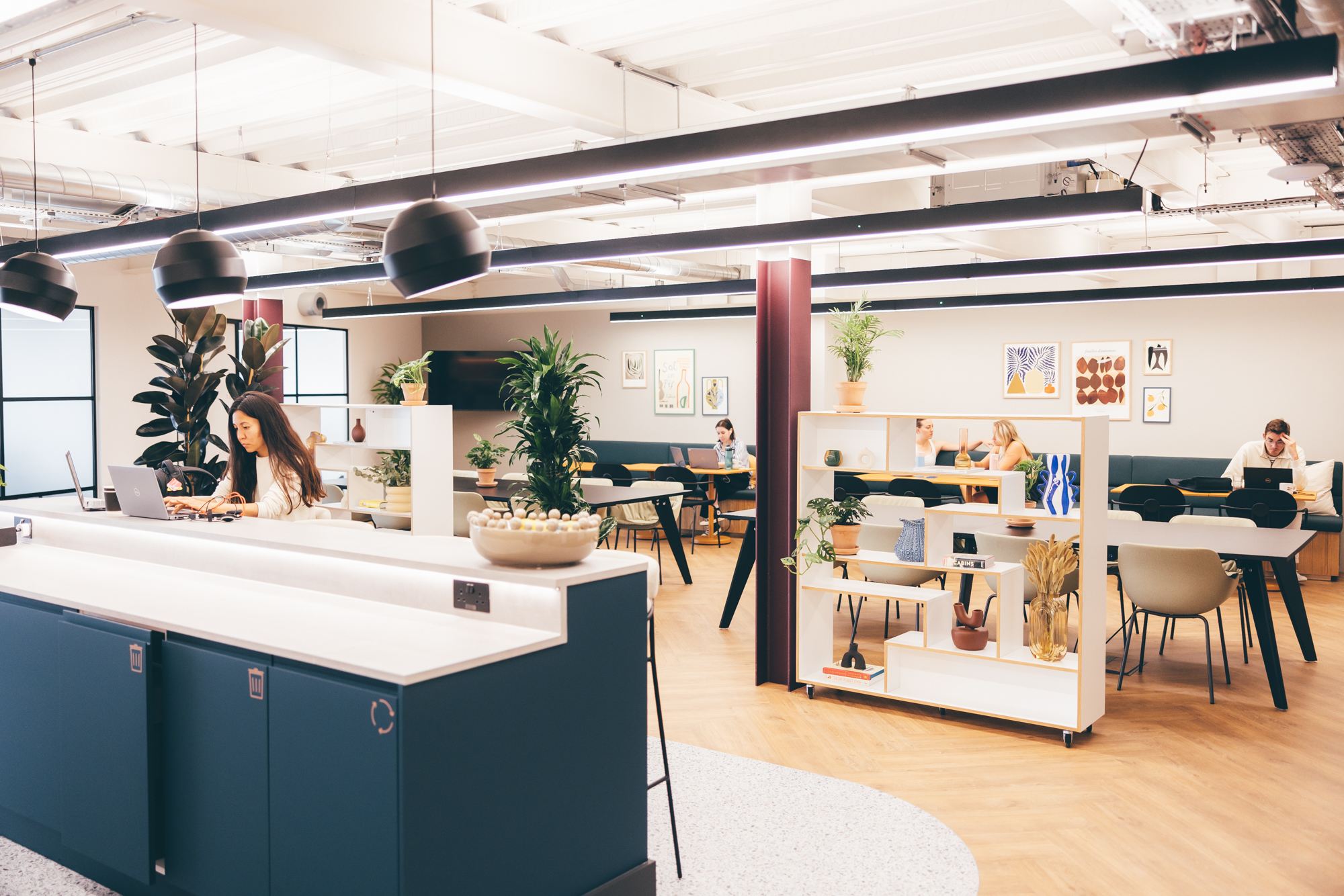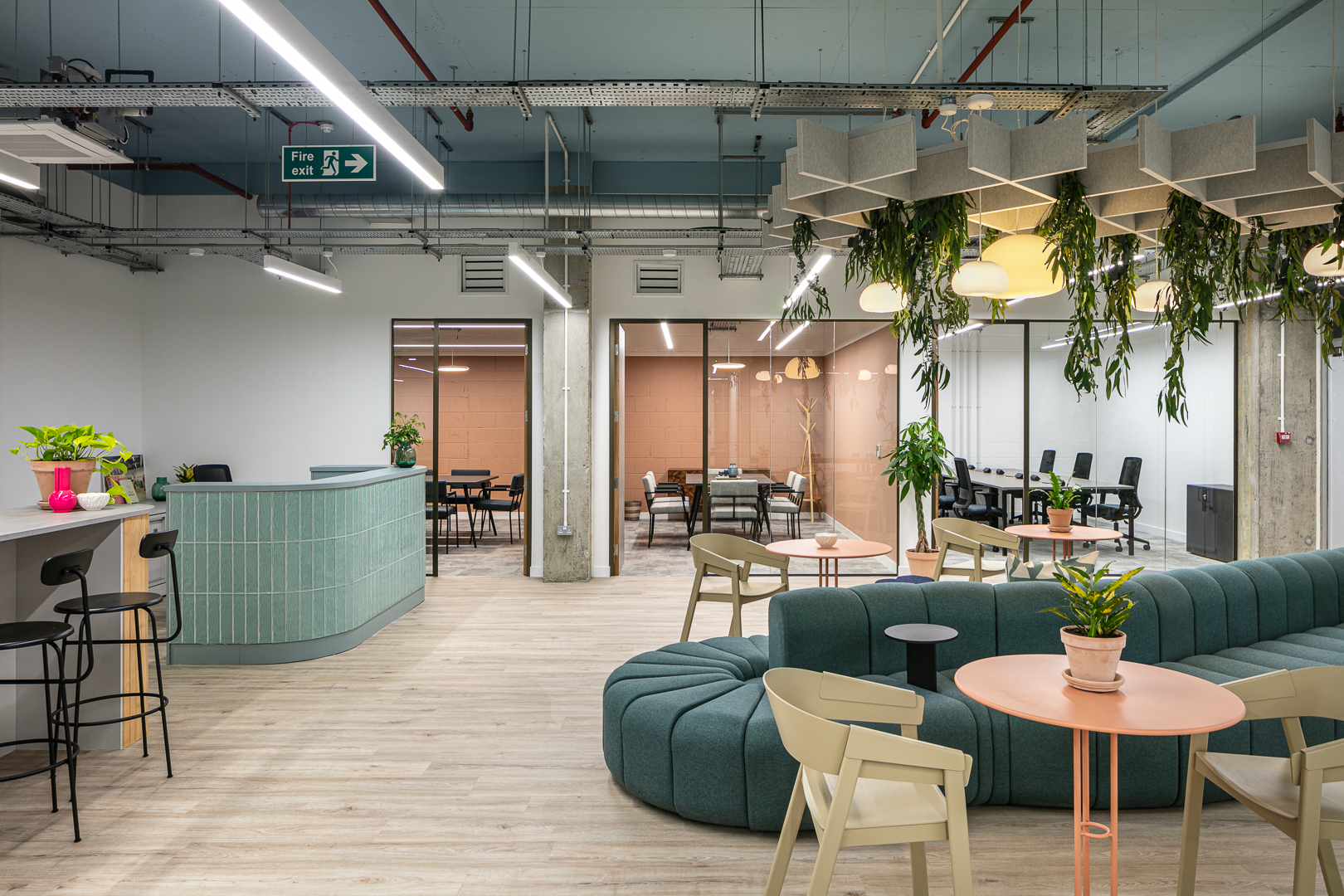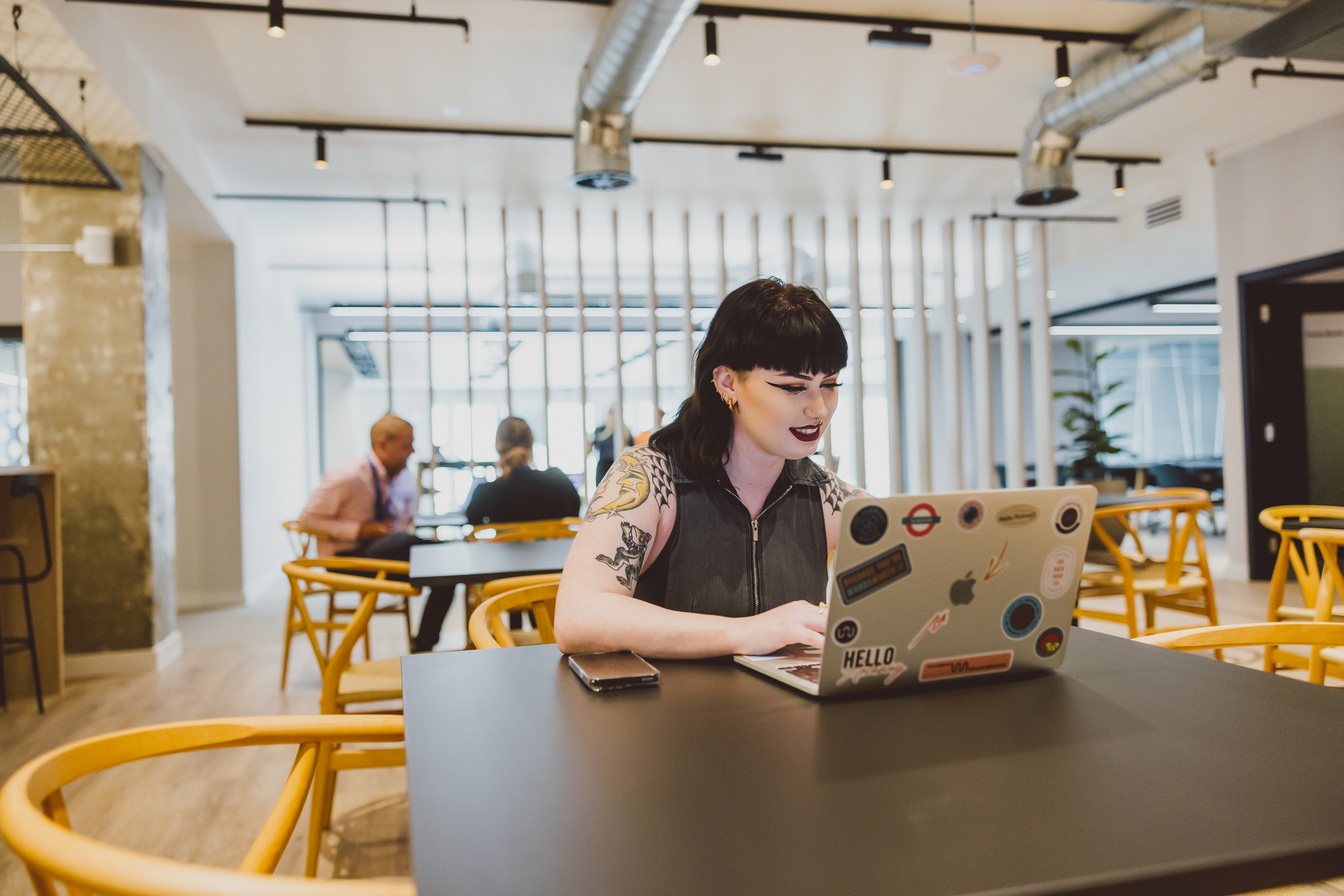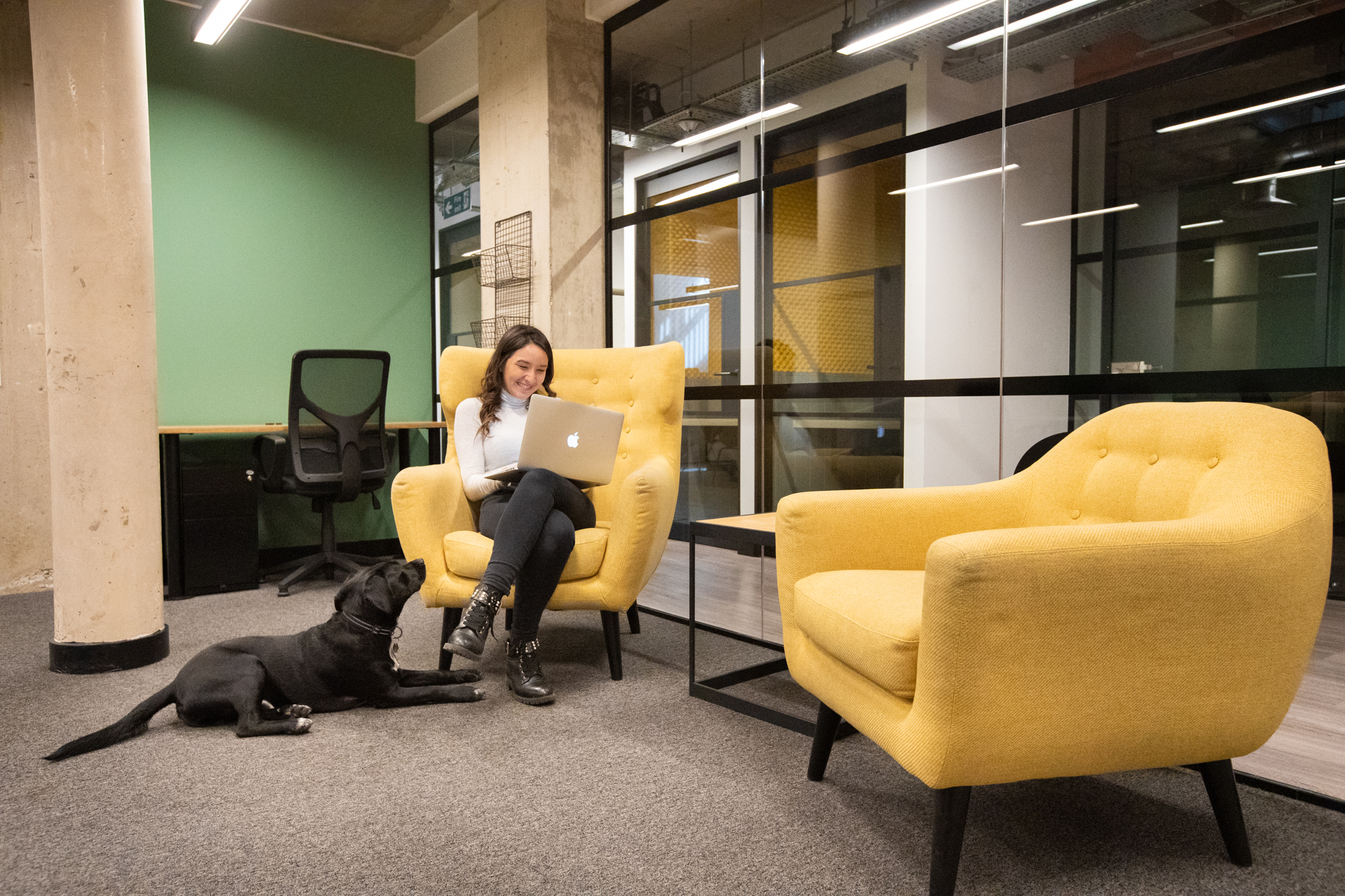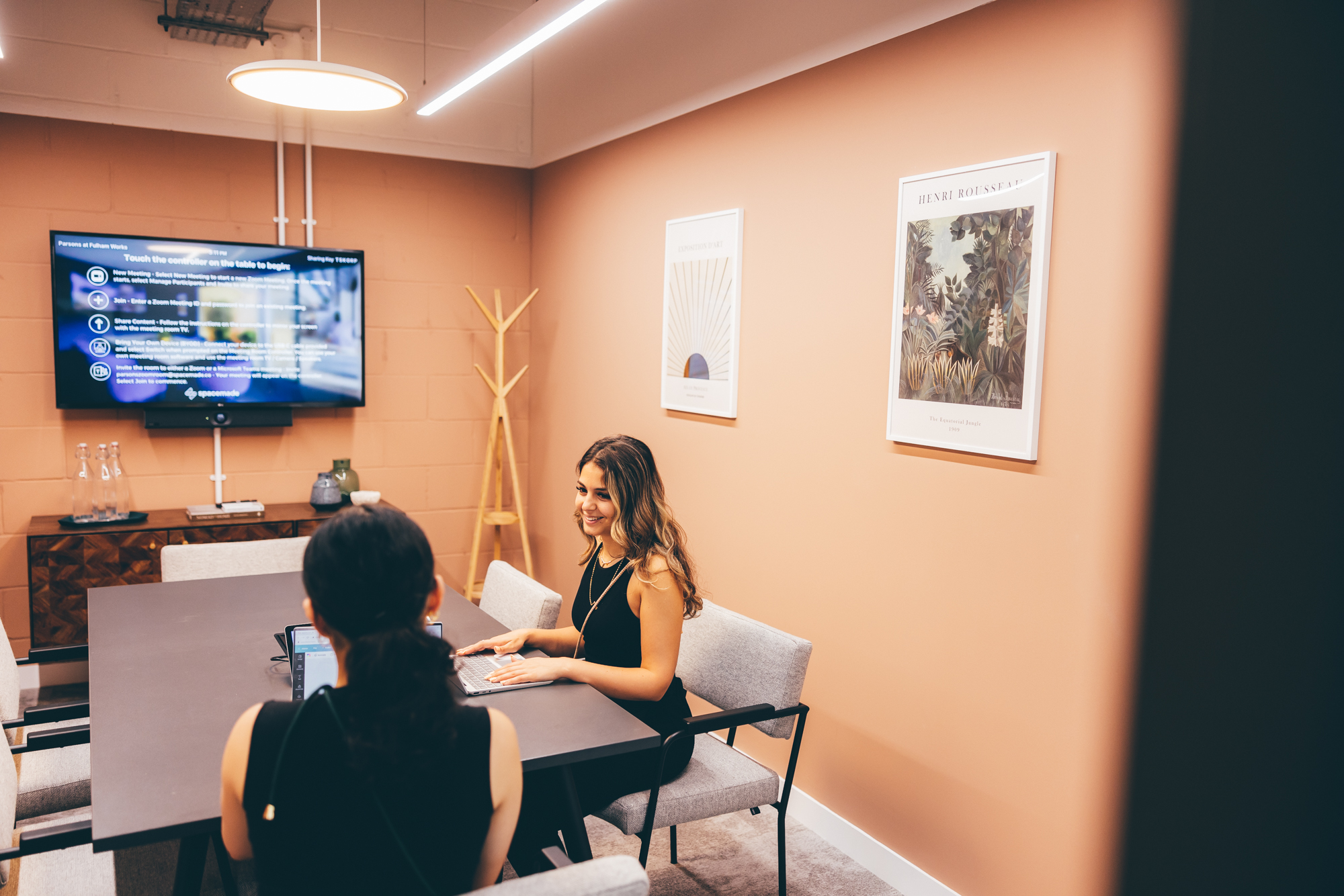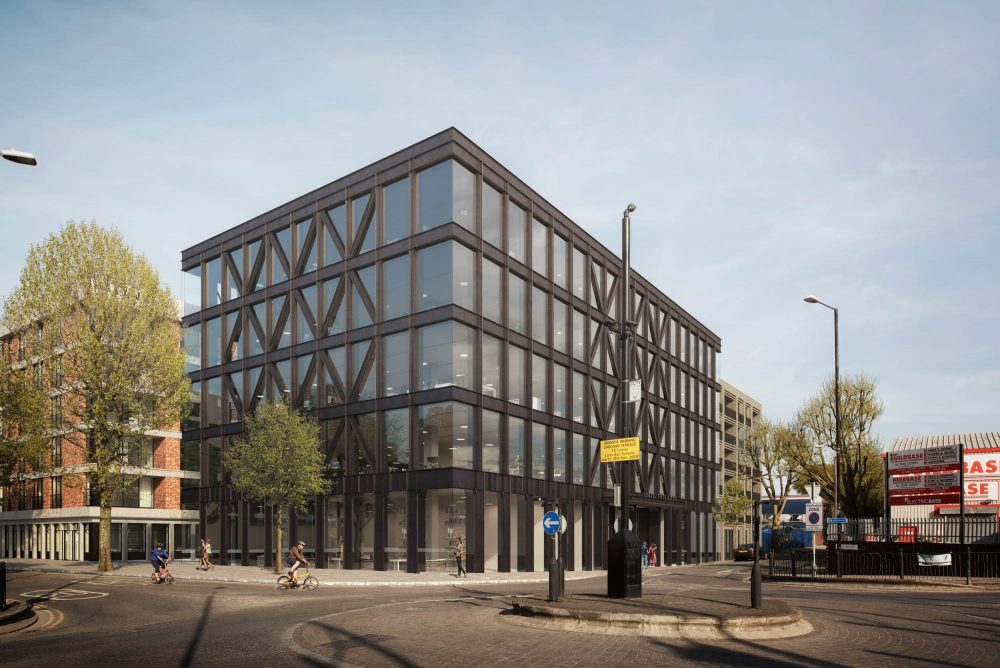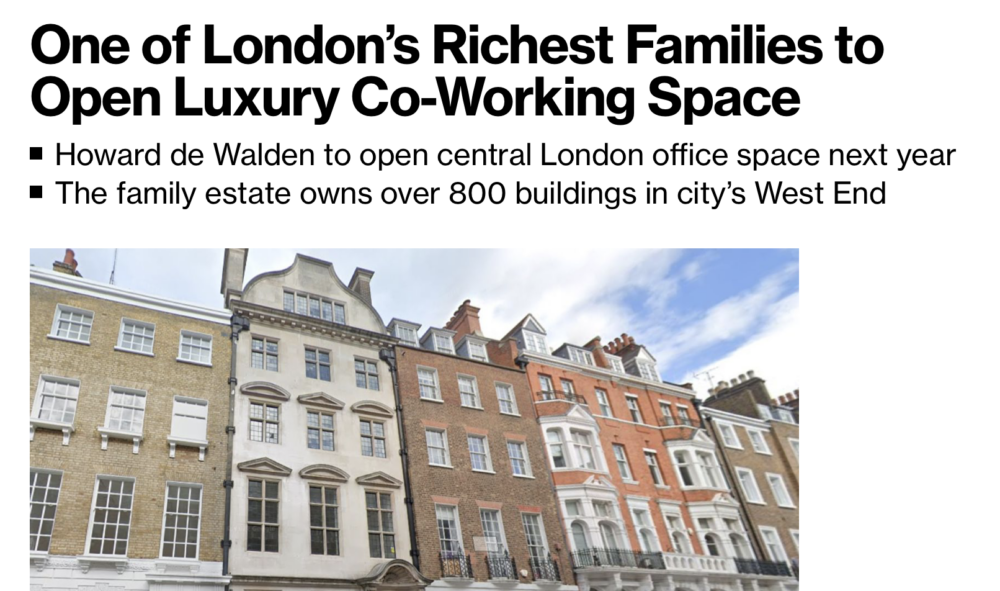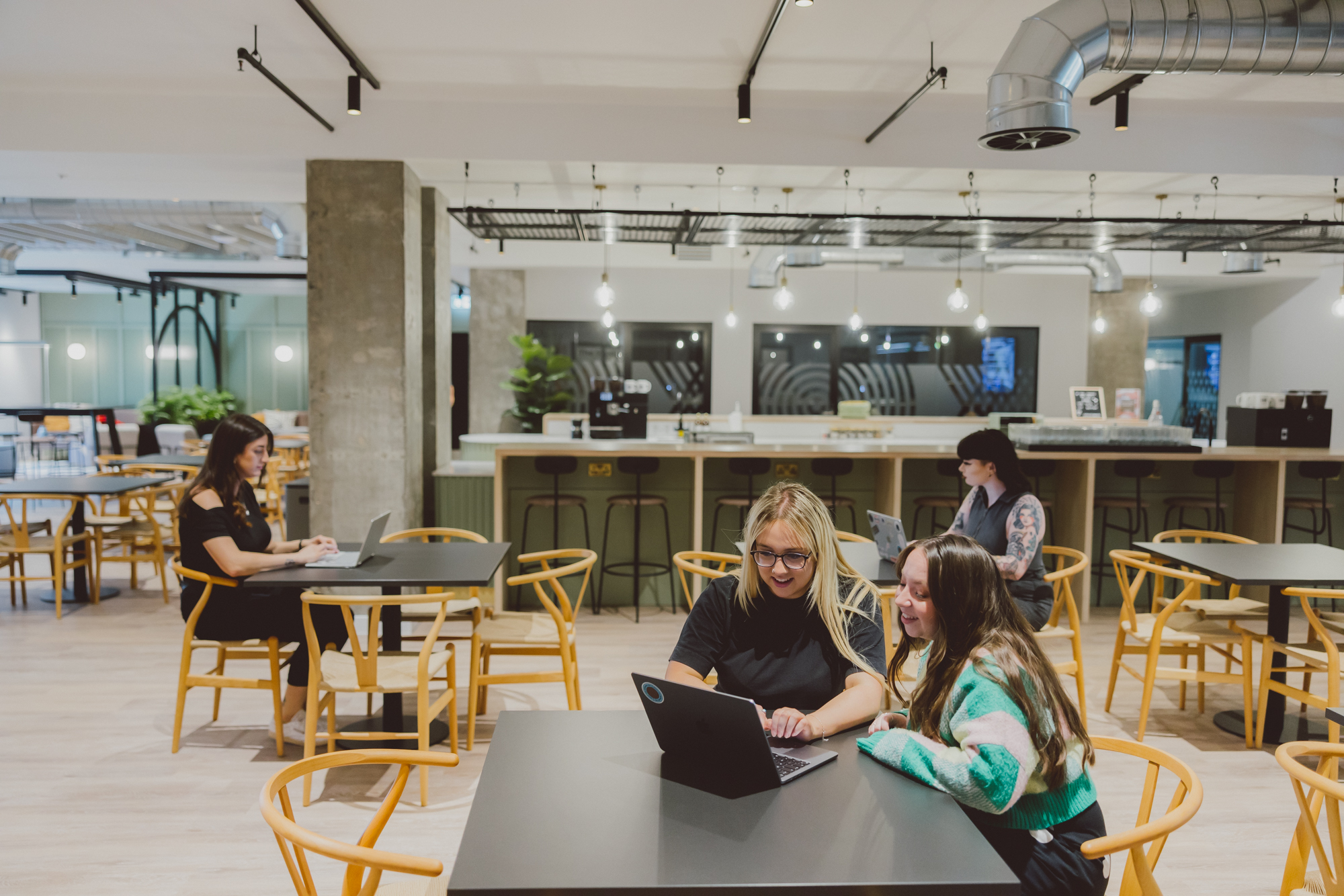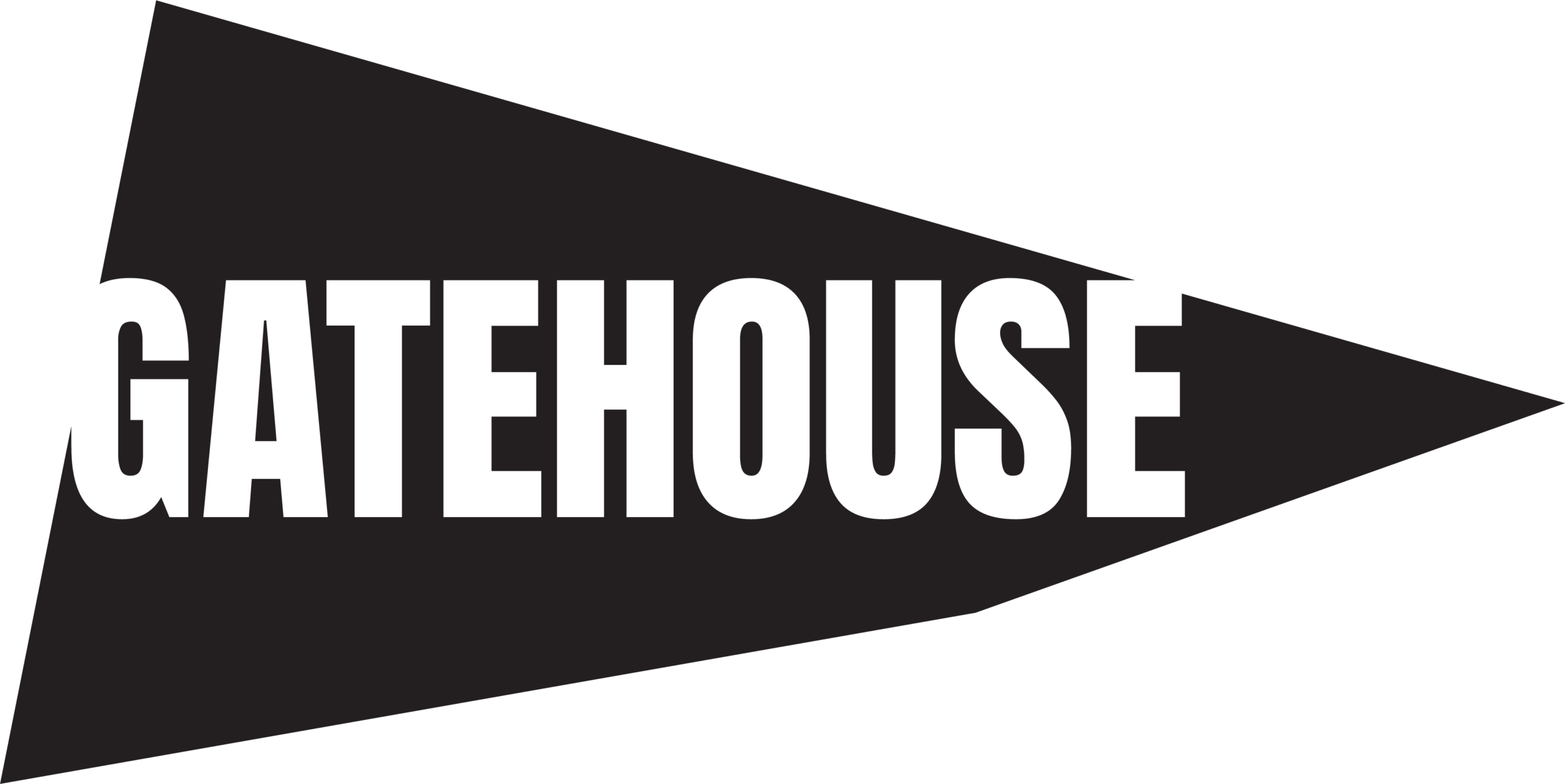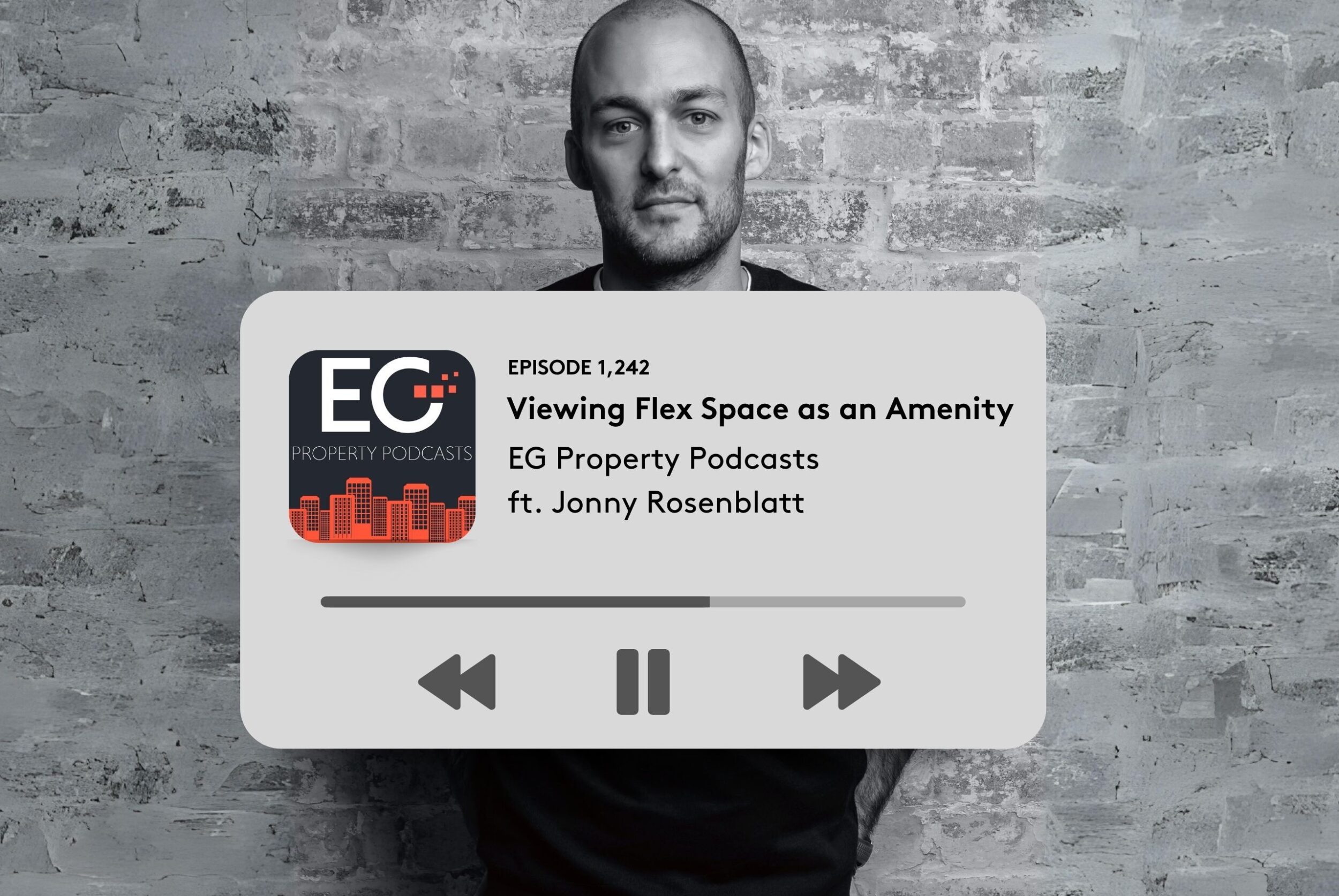
Viewing Flex Space as an Amenity, EG Property Podcasts with Spacemade
Listen To The Episode Here
Our co-founder and CEO Jonny sat down with Jess Harold at EG Property Podcasts, alongside Emma Swinnerton, International Partner and Head of Flexible Workspace EMEA at Cushman and Wakefield, and Simon Rowley, Director of Office Leasing and Flexible Leasing at GPE, to discuss Spacemade’s recent research into the “flex premium” and the future of the workplace in creating dynamic work environments that can evolve and foster collaboration, innovation and productivity among employees.
This episode also discusses ESG and how the flex industry is adopting and implementing environmental and social impact changes to workspaces. Alongside, the rise and fall of flexspace operator, WeWork. You can read the full interview below.
“What we’re starting to see is that incorporating flex workspace into office assets increases the overall rental income on average about 20-25%… But importantly what we’re seeing is not just the financial benefit where flex is an amenity for a bigger asset which starts to drive the value of traditional lease, but also enhances the sense of community and desire to get to the office.”
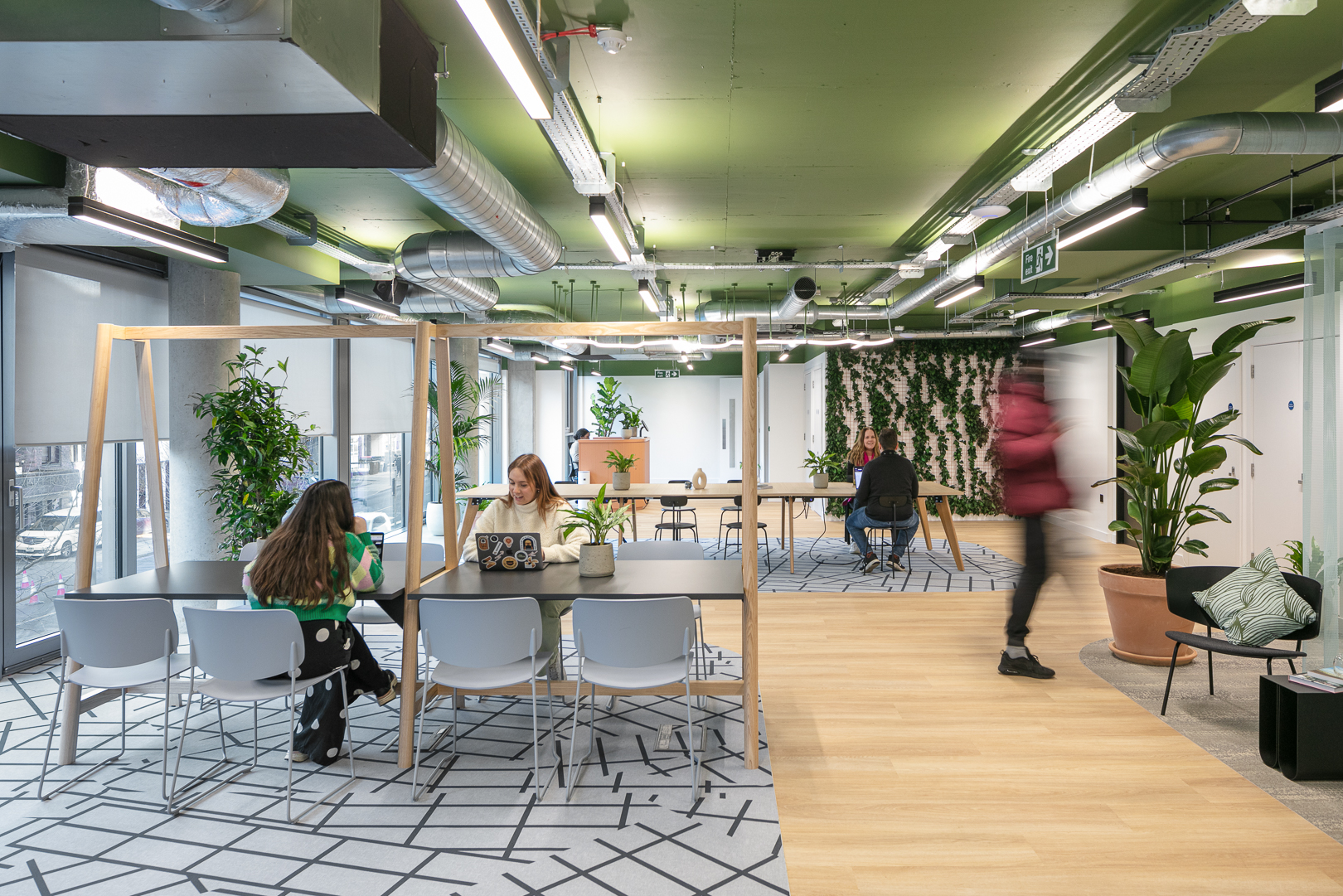
Jess: In this episode of the EG Property Podcast, produced in conjunction with flexible workspace operator Spacemade, we explore Spacemade’s recent research into the Flex Premium. And the future of the workplace in creating dynamic work environments that can evolve and foster collaboration, innovation. and productivity among employees. Jonny, can you talk me through the key findings of your report and give some insights into that premium that Flex Office Space provides for building owners?
Jonny: We carried out this report because we were curious to understand the effective premium that flex space brings to a building. Whether that’s in a mixed use scheme or whether that’s a flex space in its entirety. At Spacemade, we operate buildings alongside landlords and building owners, and so we wanted to really quantify what that relationship looks like in terms of working with our landlord partners.
Valuation methodology tends to lag a little bit further behind. It was important for us to understand what the market really feels, so we went out and spoke to a whole array of different stakeholders; developers, asset managers, building owners, as well as agents. A mixture within the flex world and the non-flex world. We asked just a series of relatively simple questions, to try and gauge the appetite for flex space.
Our findings were relevant to what we feel we see across the market, but actually the growth of flex has brought so much benefit to wider buildings. There are a few elements that we notice. First, we noticed that according to agents and building owners, over three quarters of tenants are willing to pay more for flex space in a building. I think what we’re starting to see is that incorporating flex workspace into office assets increases the overall rental income on average by about 20 to 25%.
Across our surveyed building owners, two thirds started to see overall rental increases once their asset had adopted flex space. I think quite importantly, what we’re seeing is not just the financial benefit, but a wider benefit. What we see is flex that is an amenity for a bigger asset, starts to drive that value on traditional leasing as well, but also enhances the sense of community, enhances that desire to get to the office.
I think what everyone across the office market feels is a need to attract users to the office. This is not just about ensuring that people come to the office because they’re contractually obliged. We’re now competing with home, we’re competing with all sorts of office products in the market, and we need to bring people to the office for a reason. So, the amenity that flex space can deliver, the hospitality element that we’re really fixated on, those pieces really start to drive the value, and then drive benefits of incorporating flex space.
When we spoke to agents, we started to see that there was a trend pretty concurrent with what we’re seeing. We noticed that the agent’s response was that on average tenants will be willing to pay approximately 5-15% more when a building has flex space. And actually that two thirds of agents say that a building incorporating flex space tends to let for a premium, by comparison to a traditional regular leased building.
Jess: Emma and Simon, how do your experiences mesh with those findings? What are your thoughts on the way that flexible workspace can enhance the offer of an office building?
Emma: One of the things a number of operators reported during the pandemic was that they were actually seeing higher occupancy or usage of their spaces than some of the traditional tenants in a building.
I think that’s because people are going there for more than just bricks and mortar. It is around the additional services and it’s around the networking and the community. Often you’ll see you’ve got much smaller businesses that are operating in flex spaces and they need that wider network and interaction with the other tenants of the space to help their business growth.
Being a bit more specific about Cushman and Wakefield, my team tends to advise a lot of landlords and investors around their flexible workspace strategy. We’re sitting alongside a number of clients at the moment who are looking at bringing flex into their buildings.
There will become a stage where it’s almost a necessity to have [flex space] in buildings, and a number of occupier clients are actually demanding that, so when they’re touring traditional space one of the questions they ask the landlord is, ‘What flex are you having in the building?’
Simon: From my perspective, we’re a central London only property owner. So, we own and manage about two billion pounds worth of property in central London. We offer two types of spaces. One is HQ space, so building large developments for the likes of Clifford Chance.
The second focus for us is on flexible workspace that we provide either:
- Through a specialist such as both Johnny and Emma can provide. Accessing the smaller size customer, typically up to 10 person businesses.
- Our fully managed product, where we are letting whole floors and providing all the service and the hassle free enjoyment that a lot of customers are now seeking. But with the reliability and the privacy of their own floor delivered by the owner of the building.
So we’re definitely leaning into the trends that both Johnny and Emma have mentioned, but they are mutually beneficial. We definitely see that by engaging with customers early in their journey, and if they’re growing, there’s an ability for our HQ developments to be the end journey for our customers. And that’s actually how we can grow customers within our portfolio – that’s the exciting thing for us.
We’ve got something called Customer First, which is an approach that we’re taking where everything we do we’re looking at through the lens of the customer. I think the real estate industry generally hasn’t been very good at that. Flexible workspace and hospitality has definitely shone a light on the deficiencies of our industry. We feel that there is a really exciting opportunity for some genuine brand loyalty and we can hopefully help some of these customers grow into our space and be long term customers for us.
Jess: Against that background that you’ve all outlined, obviously 2020 and 2021 would have been very challenging for the sector as it was for many sectors, but we’re now out the other side of that and last month a CBRE report suggested that demand for flexible space is very high, with take up in London expected to hit one million square foot by the end of 2023, and rates rising accordingly. What are your impressions of the current market as it stands, and can supply keep up with demand?
Jonny: This year has been really interesting. Over the last six months we’ve seen month on month record inquiry levels. I think that’s a reflection of the products that we’re able to offer, but also that total shift in the direction of flexibility. In my view and the view of the team the only currency that really matters now in office space, commercial real estate, is flexibility. There are many ways of delivering that, but I think that’s really what end users are leaning into. So, we’ve seen that shift in demand from members, which has been amazing.
One thing that we did notice comparing 2022 with 2023, although there are a much higher number of inquiries, the average inquiry size is slightly smaller. I think there’s a number of reasons for that. One, I suppose there are economic constraints that this year has brought that the previous years haven’t. But, also what we’re seeing is that the patterns of working behavior have become pretty ensconced in most businesses now, and there’s the debate over working from home or returning to the office.
Increasingly, we are seeing bigger companies taking access to our space but a smaller footprint for their office. And then, as and when they need to bring people in, they are renting space on demand. To us, that makes perfect sense, because why would you pay for a commodity that, fundamentally, you are not going to use 40% of the time? It’s about using the space when you need it. So, we have seen big spikes in demand, but a slightly smaller ticket size, which has been a net positive for us – but it means you have to work harder for some of these deals.
It’s about using the space when you need it. Those times where you’ve got everyone together, the times where you’ve got people coming into the office once a week, once a month, once a quarter, you’ve got these facilities; event spaces, the hospitality drive, all of that is there and available for you. We’re finding that’s becoming a pattern of working behavior that our users have become pretty clear about and understanding what they want to do.
It’s been interesting. We’ve seen big spikes in demand, but slightly smaller ticket size, which has been a net positive for us, but it means you have to work harder for some of these deals now.
Emma: I think just looking kind of more broadly, when you look at what happens historically to flex in a downturn, it tends to be the part of the sector that is impacted first, but then it also tends to be the part of the sector that recovers quicker.
That’s exactly what we saw post 2021; that the flexible part of the marketplace bounced back quicker than the traditional part of it. In the West End in London, particularly, that market was back to pre pandemic occupancy levels very quickly. The city took a little bit longer to recover because there is more space there.
What’s really interesting with this is actually the growth side, because you mentioned that we could be seeing about a million sq ft of take up this year. Actually, in the three years before the pandemic, that figure was more like two million sq ft a year, but primarily that was driven by WeWork.
Obviously, what’s going on there is quite well documented at the moment. I think the growth is more widely distributed across other operators in the marketplace. Both landlords and operators are trying to make sure that they’re delivering flex spaces in the right places where there is the right customer demand to ensure that that’s also commercially viable.
Simon: Since COVID, there’s been an acceleration of wider trends that you see around the globe. One being immediacy to have something on demand, which you can get in most other walks of life. If we wanted to supplement the breakfast that we’ve all just had, we could tap in onto our phones and probably get something delivered pretty shortly. Now, clearly, real estate has never been as speedy as that, but I think coming out of covid the the ability to take stock of where you are as a company, to look at you know a flexible workspace that gives you opportunity to to grow, that’s actually something that a lot of our customers were starting to think about pre-covid.
The acceleration post-covid has definitely been a capital light entry to office space which typically in the past has been very difficult to find, and more choice. More people offering it, the likes of WeWork, as Emma mentioned. But also a lot more of our contemporary owners who are prepared to offer something that the market is actually really wanting.
We’ve seen the same growth in inquiries. Our ambition is to grow our flexible workspace to a million square feet in the next five years, which would take us to about 40 percent of our overall portfolio. We are really leaning into this swathe of demand.
Jess: Simon, you mentioned that you are London focused, but nationally it seems the demand is growing in a similar way. Are there any particular spots or areas of growth that you’ve identified in the rest of the UK?
Emma: I think primarily it’s obviously the main six cities across the UK. It’s interesting that Manchester and Bristol bounced back quickly as a result of the pandemic. Some of the others have maybe lagged slightly behind, but you’re always going to get differences and you’re going to get sort of pockets of activity in different cities.
One thing that was quite interesting was during the pandemic, there was a lot of discussion around: Is this change in working practices going to drive demand for flexible workspace in smaller locations; more regional towns and cities or tertiary locations?
That’s a trend that we haven’t really seen. When demand has bounced back, it tends to be back in major cities, and the reason for that is because if people are not in the office, they’re generally working from home or there might be small neighborhood locations that people can use to fill that need.
One change that we have seen is growth in new technologies. It’s similar to being in a gym environment, which enables you to go and drop into flexible workspaces on a day to day basis, paying for certain amounts of credit. This does facilitate that ability to work near home.
To pick up on the choice point that Simon mentioned, a lot of them can be quite operator agnostic, so you can pick the flex space that works for you, even if that’s part of a wider corporate offering.
Jonny: Spacemade has spaces in Leeds and Birmingham, and both markets have been really successful. Leeds has been going for a while since we started the business, and actually post COVID, we did quite a lot of work on the building. We created a really interesting flex amenity and added a top draw cafe into that building. Since then we have sat between 98 – 100 percent occupancy the whole way through and been able to drive desk rates consistently.
The demand is really strong in that market and continues to be incredibly strong. Possibly there’s a slight under supply, or there has been historically, but actually I think there’s a shift in direction because perhaps pre-covid markets, like Leeds, weren’t fully educated in the flex market, and since it’s become the office of choice.
Leeds has been incredibly strong. We have just opened in Birmingham over the summer. We opened with close to 50 percent occupancy as a starting point, which is a very strong indicator for us. Again, that is 15-20 percent of a brand new, beautiful building that’s just been built by CBRE Investment Management. That shift has been really interesting, it’s one of those spaces where the flex is an amenity for the wider building, as well as an entry point.
Much like Simon was saying earlier, this is a growth within the building and a really good opportunity. We operate alongside our landlord partners. Those members that are part of our space, there’s the opportunity for them to grow within that building and to add space as and when they need to, perhaps more traditionally too.
Both those markets, Leeds and Birmingham, have been really strong. What’s really important about regional markets is the sensitivity of location, it does need to be best in class. In London you can get away with being slightly off pitch sometimes, and I find generally regional markets, you can’t. Actually a five minute deviation from the main stretch can be everything.
Simon: Although, interestingly without question there is a bifurcation in London between the best and the rest. We’ve seen that across all of our office offers particularly HQ, but it’s because you’ve got to earn the commute. It’s got to be worth coming into. That means customers are looking for terraces, the highest ESG credentials. But they also want this flexibility and immunity, which is why the flexible workspace provision is such an interesting and burgeoning part of the market.
Jess: One of the potential challenges I imagine is that for many companies, those two or three days of the week tend to be quieter. So, how have flexible office providers evolved their practices to help enable that? And, does it pose a challenge that three days of the week are perhaps far more popular than the other two? And what are the ways that you can offset that?
Jonny: When you operate an entire flex building, there’s always additional space.The occupier tends to technically occupy their own office. It’s contained, but actually there’s always a hugeo overflow space you can spill over into other areas of the building. There’s meeting rooms, event spaces, breakout areas, podcast studios and cafes. Believe it or not, there is a bouldering wall in one of our buildings! All these additional amenities that can lend themselves to that overflow element.
What we’re is that if you have the right provision of spaces that can be rearranged very easily as per requirement, it means that you can cope with that demand. Yes, we’re seeing across the board Friday is quieter than any other day. But actually, Monday to Thursday, there’s very little deviation around the demand for the use of space.
Simon: We’ve seen that Friday tends to be quieter, but quite a number of our customers have taken less desks than they have employees, and they use our app to book their desks, but also they use the amenity space. We’re doing whole floors with our customers’ own meeting rooms, their own kitchens,etc to give them certainty that they’ve got space to meet in when they are in the office. Equally, we have found they do spill out into the communal shared areas. Whilst we’re giving people all that they need in their own office space, we’re also adding in amenity space, which has an opportunity cost, capital cost to put it in and then an operational cost to keep it running. But it’s because people are really demanding it, and that’s how we believe the model is going to continue to go.
Emma: I think that that does pose an interesting kind of commercial question as well as how you charge for that space when people are taking fundamentally, probably less space than they need and leveraging that overflow space. That is something that a number of operators have grappled with in terms of how to manage that commercially.
Another point on this topic is that you often see a lot of innovation in the sector coming out of the flexible workspace part of it, and a number of operators have been trying to address this point by offering shared office space. For example, two companies taking the same office and using them on different days.
I haven’t seen huge amounts of traction in this space yet, because obviously there’s issues around security and the type of business that you are. But that is definitely something that is being trialed and tested. If you’re paying for an office that you’re only using three days out of seven, you have to think of ways to use that space for the other 50 percent of the week.
Jess: Turning to ESG, how is the flexible workspace industry adopting and implementing environmentally sustainable changes in the businesses, and within those shared workspace communities?
Jonny: It’s incredibly important. We’ve all sat in plenty of meetings where ESG is banded around, and actually the truth is there’s a lack of understanding and clarity around it.
Earlier this year we [Spacemade] became a B-Corp, which has been really important for us. I hadn’t realized before we started this process quite how intense and detailed that process really is. It took us probably 18 months to get there and it’s an incredible journey.
[B-Corp] changes your mindset as a business first and foremost; how you operate, who your operating partners are and what’s important to the business. So really the fundamentals of the business really have to change so that it’s not solely about profit, it’s a lot more than that. It’s important for us as a flex provider to be a B-Corp because real estate is the single biggest culprit of carbon emissions globally.
We are not developers, we’re not building buildings. The buildings go up and then we tend to occupy them. Flex enables you to reuse space. Across the market there is a CAT A fit out and then a tenant comes in and does the CAT B and rips everything out and replaces it. Then after three years it gets ripped out through a dilapidations program and a new tenant comes in and replaces it. It’s so inefficient and dangerous for the environment that actually use of flex means that we are constantly recycling space. Yes, we’re having to tweak things a little bit, but nothing significant that’s going to be impactful.
The ‘S’ in ESG is often overlooked. We [Spacemade] find that as a flex provider, the social benefit to the wider market is so important. We operate a lot of close to home working locations, and we’re fully integrated into our neighborhoods. We build an individual brand per location so that we can target specific markets, so we have to be embedded in local communities and support them. The ‘S’ piece is critical to the ESG credentials.
Emma: Often for flex operators where you’re in part of a building, then it’s quite difficult to be the driver of the ‘E’ in ESG. That’s why it’s really important to have a partnership between the operator and the landlord because the operator can be supporting the landlord in delivering their own ESG targets. There’s a whole chain right the way through because by managing the end users of the space and the relationships with the end users, that’s all contributing to the delivery of those targets.
From an industry perspective, there’s been a lot of focus on ‘E’ until now. A lot of people are getting more comfortable with that now. They know what they need to do. How to do it and the funding of it is another challenge, but at least people understand what they need to do.
The ‘S’ is now coming into focus, and I think from a lot of landlords they are talking about this very much as being top of their priority list. There is a natural fit there, I think, with flex operators in supporting the delivery of those targets.
Simon: By its very nature flexible workspaces are sustainable for the reasons Johnny mentioned. One of the things that we look at with our approach is because we own and manage the buildings, we can take advantage of the fact that we can take a holistic approach to how we treat energy consumption. But also with the partnerships that we have with the likes of Send Coffee or Nemi Tea, who we partner with across the whole portfolio.
We’re also finding that quite a lot of our customers are leaning on our sustainability team to help them with their own reporting. There is an acknowledgement that we are, within real estate, a big contributor, and there’s a responsibility for us to do the right thing. Whilst It’s a very long journey, there are a lot of people with the right attitude who are taking on that responsibility. That is also seen as a differentiator.
Previously it was considered a moral code or an imperative to do it, whereas there is a commercial side to this, which is that those who do not embrace this will be left behind. There are going to be stranded assets, which don’t meet energy rating, but also if you do not provide the right kind of space and service in the right kind of manner, you’re going to lose your customers.
Jess: With the ‘E’ and the ‘S’, as we’ve suggested, is a collaborative approach that requires landlords and occupiers to work together, and in flexible space to work together with providers as well. So, are there ways in which landlords and developers can better understand the flexible office market and the occupiers that they’re actually providing space for?
Simon: We don’t take a cookie cutter approach to how we design our spaces, alike Spacemade. Every building is an individual building appropriate to its target market. This means that we are speculatively delivering space quite often, and that can result in changes, which isn’t great. The advice is always to speak to customers. The more that we speak to customers, the better we are at delivering space speculatively.
That’s true of the HQ end as well as the flexible spaces end. As an industry, we have been passive in the past. ‘Four rent checks a year and we’ll see you in five years when there’s a rent review’. That’s just not the case anymore.
Jonny: We’re seeing a very similar thing. Our brand approach to each building is critical because it might sound like it’s just the name above the door and a logo, but actually it’s embedded in what we do in each space and in the fundamentals of how that hospitality team on site is approaching people.
We have spaces that are targeted much more towards professional services, corporate occupiers in the Strand. We also have spaces in East London that require a much more creative approach, to a very different target market. You can’t tar everything with one brush. You have to really understand that local market. We do that every time we take on a building or we’re close to taking on a building, we will go out and to our sort of target customers. From that, we will delve into what that building really needs.How does a building owner need us as a flex provider to deliver their wider approach, their business plan and how can we support that.
Emma: I would argue that every owner is different; what works for one owner might not work for someone else. In terms of both what they want to deliver and how they want to deliver. Whether that’s through a partner, whether they want to do it themselves, how they want to structure a relationship, how much involvement they want to have, what their objectives are for the space. All of this will have an influence on what’s the right solution.
Jess: One thing that has been mentioned a few times is the elephant in the flexible workspace that is the rise and fall of WeWork. Is there a bit of a danger that the high profile nature of WeWork in the public consciousness casts a little bit of a shadow over the public reputation of flexible offices, and what lessons can be learned from its experiences?
Jonny: It’s always the topic of conversation. I think WeWork brought FlexSpace into the public consciousness in a way that no brand has ever done. In my view, WeWork is probably the strongest brand that’s ever been created in commercial real estate. No brand has seeped into the public consciousness as much.
WeWork’s issue is not a demand issue, because demand is strong. It’s a liquidity issue. That business model, as we’ve all discussed and watched on Apple TV, was flawed from the very beginning, and it felt like only a matter of time before something like this happened.
I find it sad to see, because I think they’ve done so much for the industry, but equally, what’s happened is we’ve got this new breed of operator based on a far stronger business model and the fundamentals are far stronger. You’ve got great landlords that have moved into this space because this is where the demand is.
There are so many businesses now, who we refer to as flex natives, and they’ve only ever been in flex space as a business, they’ve only known flex. That’s really where the demand is going to be. I think WeWork’s been a big proponent of delivering that and their business model frankly, was not sustainable. These new operators are creating much better products in a much more matured market.
Emma: I would agree. I think WeWork has been a catalyst for growth and change in the industry, which has had a positive impact on a number of different areas. Inevitably there’s going to be some bumps in the road over the next few months. It’s hard to predict exactly how this is all going to play out, but there are more negative headlines that may cause people to lose confidence in WeWork as a brand.
But, I think the sector, particularly in the UK, is strong enough and robust enough to withstand that. There are a number of other operators who haven’t had the same challenges, who are potentially looking to see this as an opportunity to continue to grow their own businesses.
I definitely hope that WeWork is still around because I think they still have something to add in this whole tapestry of what flex space looks like. It would be also interesting to see what happens outside of the UK and in other markets, because I would argue that the UK is probably the workspace with the most breadth of flexible workspace operators. The nervousness around the bigger impact on the sector as a whole outside of the UK.
Simon: I think you’re both [Jonny & Emma] are spot on. We don’t have exposure to WeWork because for a long time we’ve had a policy that we don’t want people to buy long and then sell short and leverage our assets. That’s why we work with the likes of Johnny and Emma to deliver a sort of management agreement, a partnership, where we feel it’s necessary.
I think there’s a lot to admire about WeWork. They definitely tapped into a psyche and a type of demand and they were a disruptor, which frankly, the industry needed. Since COVID, we’ve been leaning into the membership pool of WeWork because we felt that there was a maturity to a number of those customers who are looking for a credible, reliable business or building owner to provide the same kind of service. I think it’s likely to be a net positive for us.
Most of these centres that we’re talking about in London are pretty well occupied in terms of numbers. You’ve got a number of companies in there who will either stay there and provide both Emma and Johnny with an opportunity to perhaps step in and help landlords out. Or, they’ll be movers and that’s where we could pick them up to come into our fully managed stock.
On the HQ side, clearly there could be a bump in the road if some of these buildings get released, not intended secondhand space. But again, that plays back into that bifurcation story about the best and the rest. Actually, from our perspective, we don’t really see what’s going on as a particular risk.
Jess: One final question to end just very quickly from you all, do you see the flexible office space sector in 2030?
Jonny: I think the direction of travel across the market is hugely in the direction of flex, and that’s brought on by change of consumer demand. You’ve got a lot of users that want flexibility. They don’t want to invest their capital in leasehold real estate, and they just want to be able to move fluidly through their real estate. So it doesn’t matter what report you read, I think it shows that is the direction of travel, but we’re sensing that as well.
Simon: We have an ambition to grow into the flexible workspace and for it to be 40 percent of our total portfolio, which is where we see the wide market, certainly in central London, going. We see that our buildings will be made up of core HQ anchor occupiers on long leases. We’ll have fully managed customers who are typically on two to three year leases, and then we’ll have a tranche of serviced office customers through partnerships. That way we’re going to access all grades of the market in a single building. It’s what we created at a building called The Hickman in Whitechapel. I think for us that was a starting point as we build bigger buildings, I think all three components will continue to be part of it.
Emma: There’s no doubt in my mind that the sector will continue to grow and mature over the next few years. I think lots of people have tried to project where it will get to, in terms of a percentage of the overall market. There was a stat that seemed to have stuck, a few years ago, that said that 30% of the market will be flexed by 2030.
But for me, I think it always depends on how you define flexible workspace. So, are you really just talking about coworking serviced offices? Or, are we talking about the managed space offer that GP have been leading the way on. It depends where you define it. If you add those all together, potentially 30% is achievable, but just picking up on something that Simon’s mentioned a couple of times, which I think could be an interesting overlay on this, is around the bifurcation of the office market. We’re definitely seeing this traditionally and flex tends to follow the same trends, but the point around the most in demand spaces are the Grade A spaces in the best locations with the right sustainability criteria. If that continues, as well as occupiers perhaps taking less space than they have done previously, what happens to all of this secondary space?
There might be increased demand to put flex into those buildings if they’re struggling to let up traditionally, but then is that really going to work if we still can’t find customers to go into those buildings? So, it could be interesting to see what happens and could be a growth and then maybe a bit of a plateau or leveling off in that area.
Simon: We see some of that as absolute prime opportunity because over the last decade or so, you can be quite passive as an owner of real estate in London, and it can throw off some good returns the way that the planning system is at the moment, the way you need to focus on the customer right now. I think it is probably going to help specialists. It’s those specialists who can take what is considered to be a secondary asset and turn it into prime. That’s the cyclicality that we, as a business, have always enjoyed and has been harder to achieve over the last decade or so.
Jess: Sounds like a subject that we could return to with a future podcast, perhaps as things develop over the coming months and years.
Thank you to Johnny, Emma and Simon for joining me. You have been listening to the EG Property Podcast in conjunction with Spacemade.
